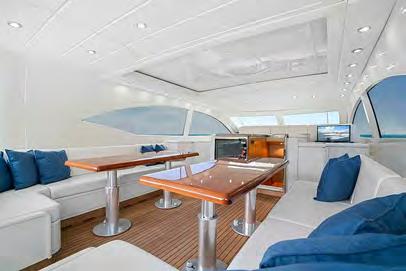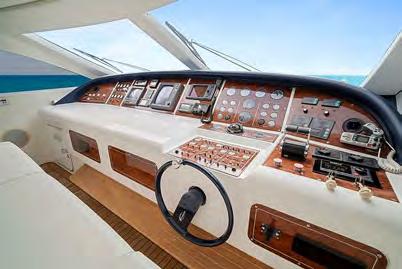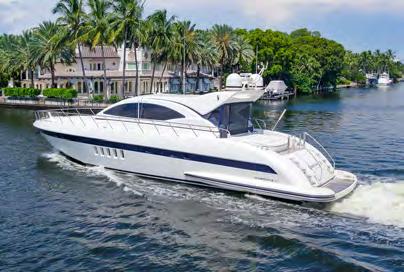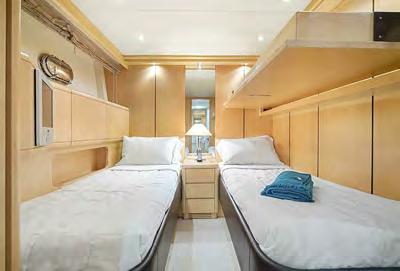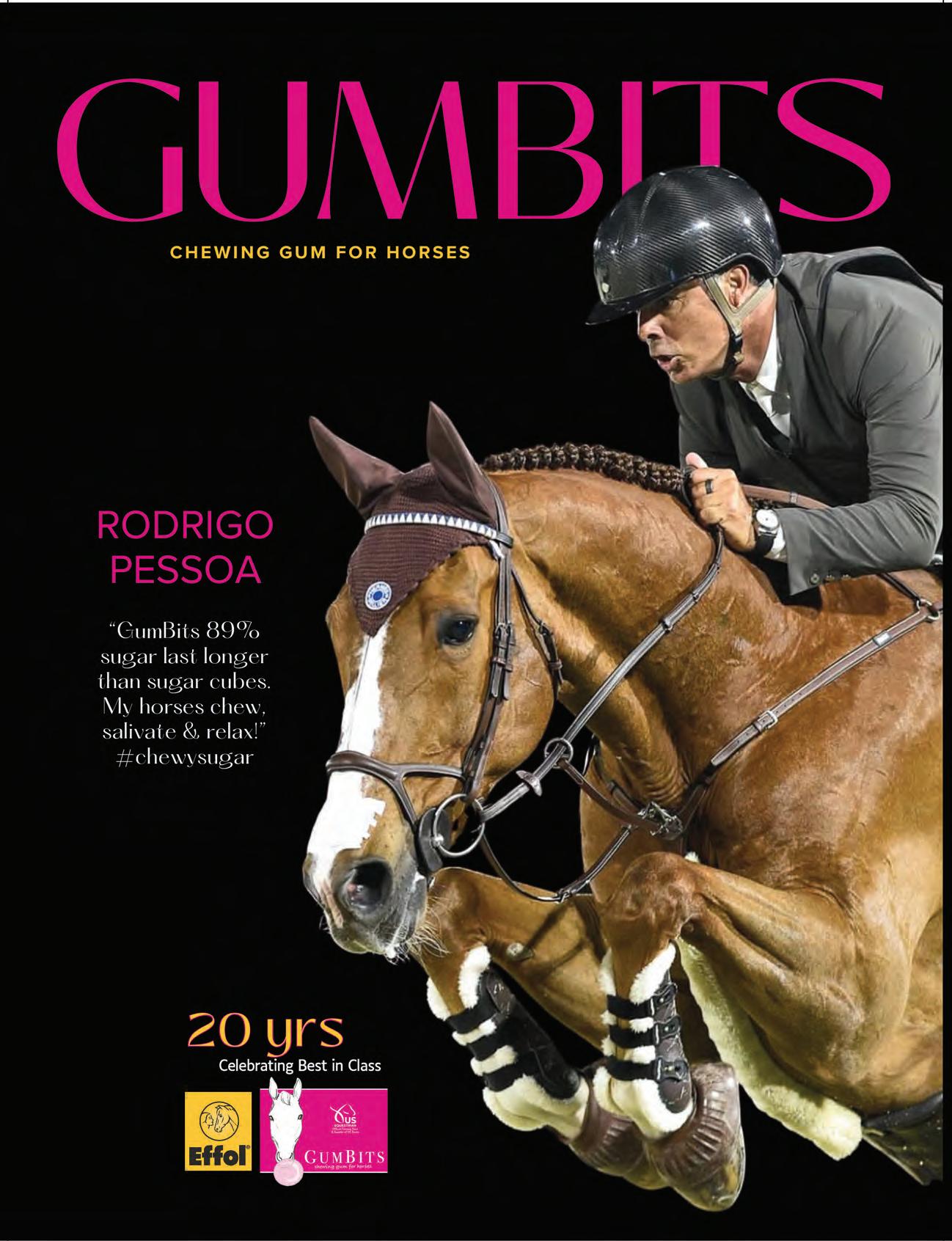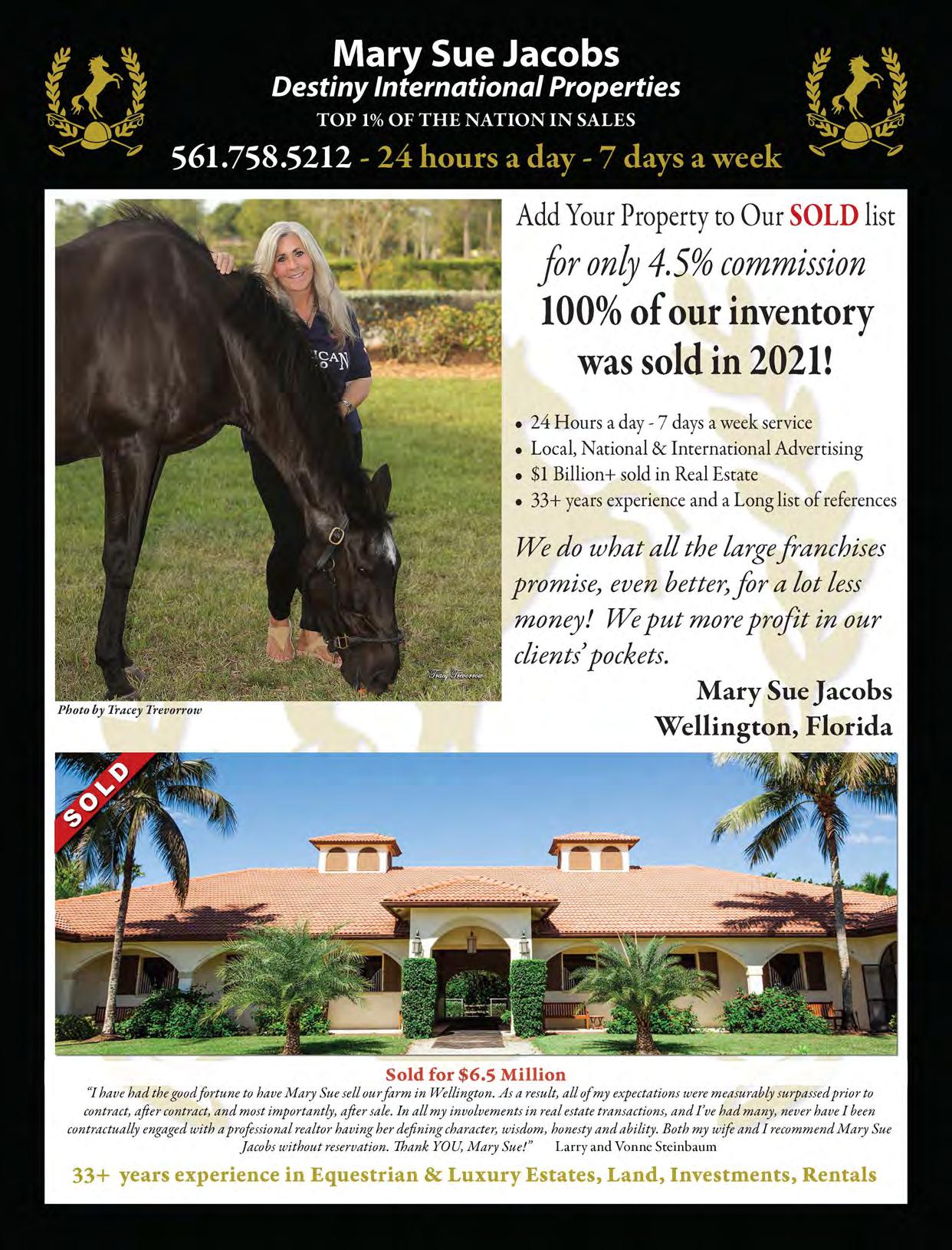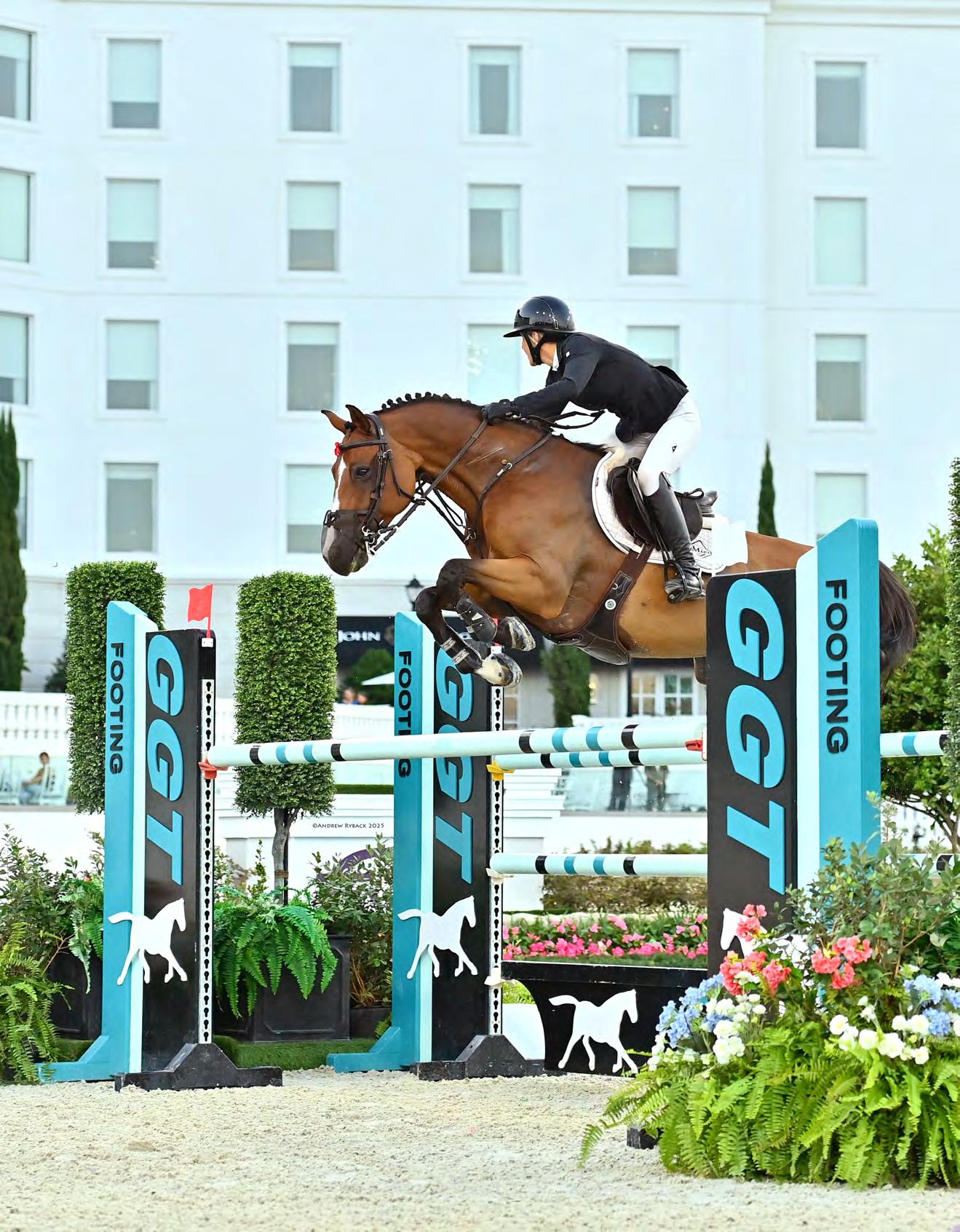








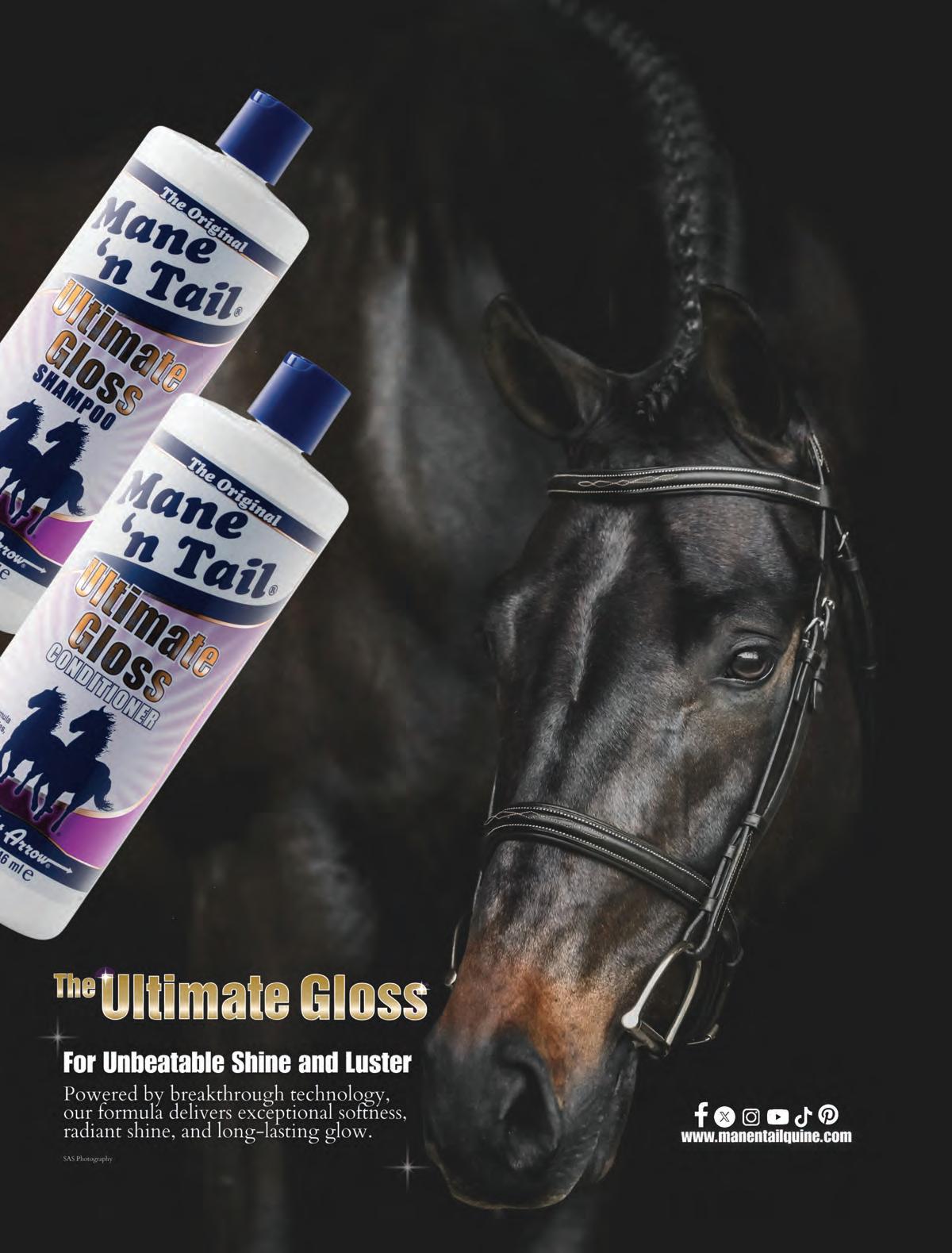



Tack






























Celebra�ng The Equestrian Lifestyle
LIFESTYLE
Published since 2008
www.EliteEquestrianMagazine.com
info@EliteEquestrian.us • Main Office, Ocala, Florida
PUBLISHER Bill Vander Brink Bill@EliteEquestrian.us
Riding a horse is not a gentle hobby, to be picked up and laid down like a game of solitaire. It is a grand passion.
EDITORIAL STAFF
Editor-in-Chief: Noelle Vander Brink
Art & Antiques Editor: Dr. Lori Verderame
Equine Art Editor: Jeanne Chisholm
Fashion Editor: LA Berry
Legal Editor: Avery S. Chapman,Esquire
CONTRIBUTING WRITERS
A Round Equestrians- Shereen Fuqua
Alessandra Deerinck
Nikki Alvin-Smith
Kat Fuqua
Dr. Bill Ormstrom
Lynn Palm
Jennifer Scalia
GRAPHICS Fran
Tom Scheve On the
Lauren Balcomb on Verdini D’houtveld Z at the GGT $65,000 CSI2* Grand Prix FEI at World Equestrian Center, Ocala Florida.





ADVERTISING
Advertising Sales
Kathy Dress 610-420-9964 kdress@ptd.net
Advertising Free Lancer: Diane Holt 713-408-8114 diane@eliteequestrian.us
CONTRIBUTING PHOTOGRAPHERS
Rhia Suawastika
Priceless Equine Productions.
Emma Miller/Phelps Media Group. Nemzoff International for Phelps Media Group
Shawn McMillen Photography Staff of Dr. Lori















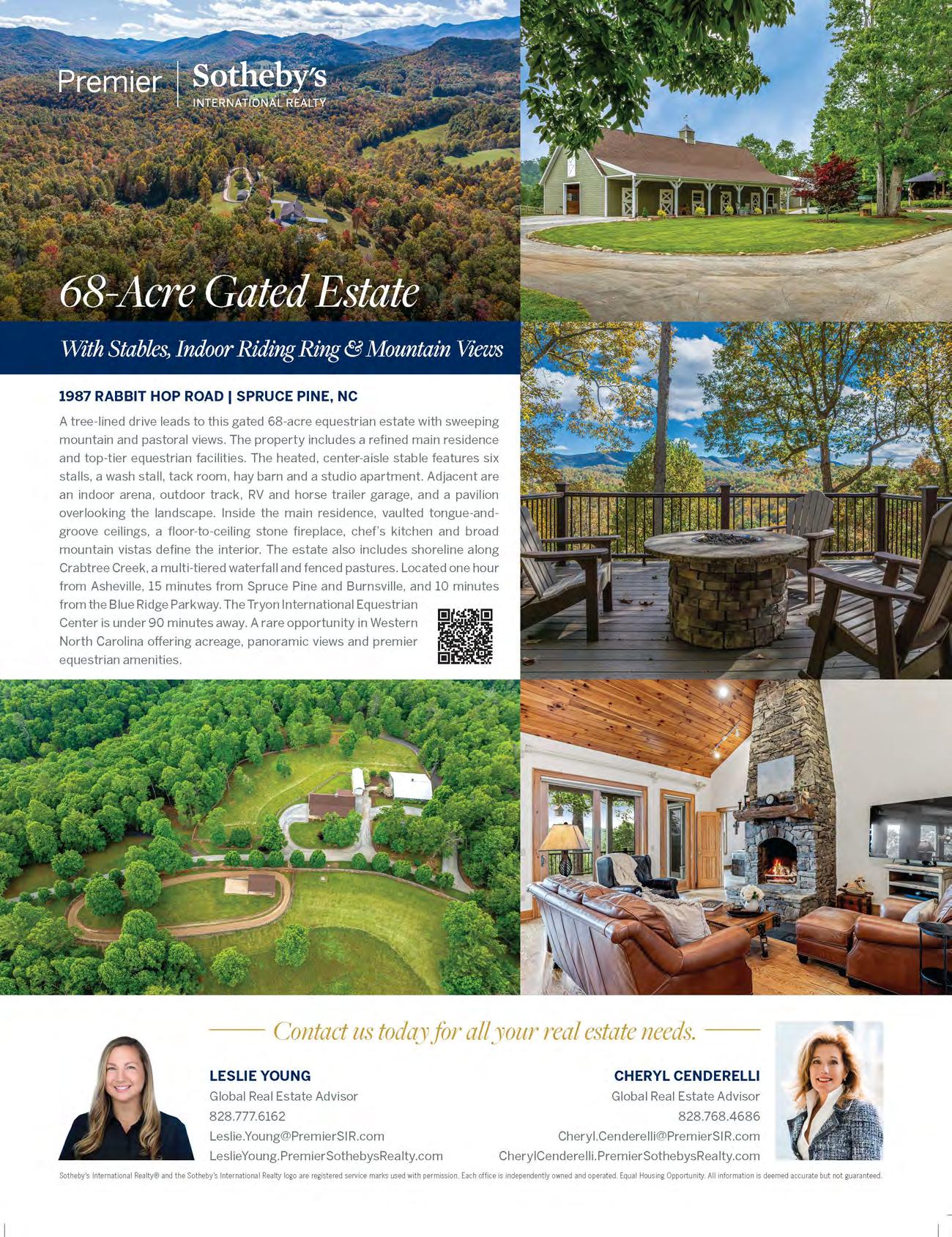

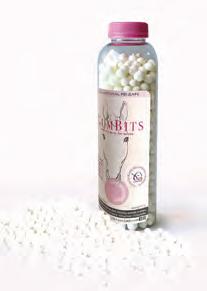
www.GumBits.com
GUMBITS
100% FEI legal.
See our ad on page 79
EQUINE HEALTH PRODUCTS Liniment, Hoof Care, Hoof Soak
See our ad page 16 www.Vetericyn.com

EQUINE CONSIGNMENTS!
Great selec�on of saddles, tack, boots,home items and more.
Free trial on saddles.
See our ad on page 72 www.GoodAppleEquine.com

UNDER HELMET HEADBANDS
The myMareCo signature Under Helmet Headband blends comfort, style and performance to secure your ride. See our ad on page 72 Amazon.com/mymareco mymareco.com
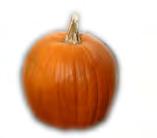
EZ SIGNS
Free shipping! 1-800-640-8180
See our ad on page 31 www.EZSignsOnline.com


CENTERLINE LOVE
An equestrian themed romance based in the world of Dressage
See our ad on page 72 amazon.comsureshotbooks.com

GREAT MASHES
From Emerald Valley Natural Health
See our ad on page 17 www.emeraldvalleyequine.com
ONE-APPLICATION-DOES-IT-ALL SOLUTION Urad leather cream is easy and natural. Clean, polish, protect, condi�on and extend the beauty and life of all your leather goods. See our tall boots “Before /A�er” on our web site.
See our ad pg 29 URAD.com
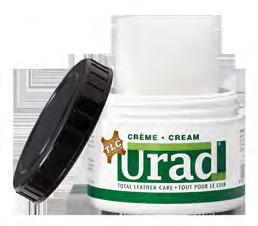
Saddler’s Preserva�ve

LAY-FLAT HOSE QUICKREEL
mounts to cart or vehicle. ATV trailer cart assembly available. Proudly made in the USA by our team of cra�smen!
See our ad page 31 BigSprinkler.com
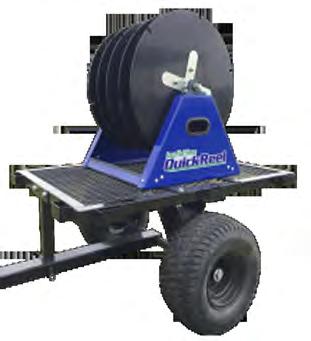

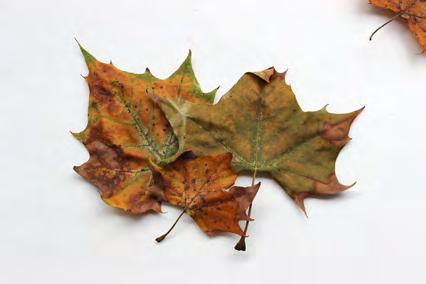
Protect and restore your valuable leather for years to come. See our ad page 27 www.jmsaddler.com
EQUINE CONSIGNMENTS!

ROLLED LEATHER MARTINGALE COLLAR
Great selec�on of saddles, tack, boots, home items and more.Free trial on saddles.See our ad on page www.GoodAppleEquine
great collar for training your dog. The rolled design makes it comfortable for dogs with either short and long fur. Made with US bridle leather for its strength, durability, and beauty.
See our ad page 27 auburndirect.com/product/mar�ngalecollar-rolled-leather/


www.EliteEquestrianMagazine.com
Engineered for fit in mo�on.
See our ad and feature on page 58

ID FOR YOUR ANIMALS
A must have for traveling and evacua�ons. Available for dogs and farm animals. See our ad 65

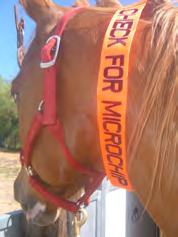
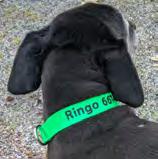
www.EquestriSafe.com


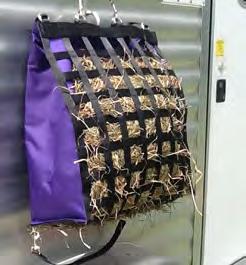



A Piece Of Your Favorite HorseCan Go With You Everywhere! Quality fashionable jewerly made with your horse’s hair. See our ad page 25 ponylocks.com
TREKKER BOOT SOCK
Extra heavyweight boot sock, extremely thick, so�, and well built. Created with ultra-so� bison fiber for all day comfort.
See our ad on page 11 thebuffalowoolco.com
EQUINE THEMED JEWELRY!
Each piece uniqueand hand made.
See our ad on page 29 www.sawhorsejewelry.com
BEST ON-THE-GO
Hay Feeding System!
Less waste, be�er diges�on for your horse. See our ad page 33 www.NibbleNet.com
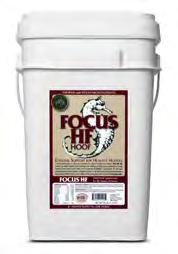
CONSULTATION when you scan our QR code, see our ad on page 73
Immune Builder Helps the Following Issues –
• Allergy Response • An�-Inflammatory
• An�-Viral
• Gastric Ulcers
• Supports kidney & liver
• Lamini�s & Founder
• Pre & Post Vaccine Support
• Detox
See our ad on page 73 www.balancedecosolu�ons.com
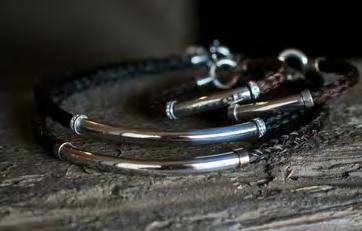


BITLESS BRIDLES


Communicate Clearly & Privately Lightweight Cyber headsets with flexible back band provide simultaneous talk, hands free, two-way communica�on
See our ad on page 35 www.eartec.com
LADY SLIM
English & Western styles
See our ad on page 43 Bitlessbridles.com
FOCUS HF (HOOF)
The most effec�ve nutrient building blocks to help support superior hoof condi�on. Contains a daily serving of the unique SOURCE micronutrients to maximize the u�liza�on and benefit of the addi�onal ingredients in FOCUS HF. 800-232-2365
See our ad page 45 www.4source.com
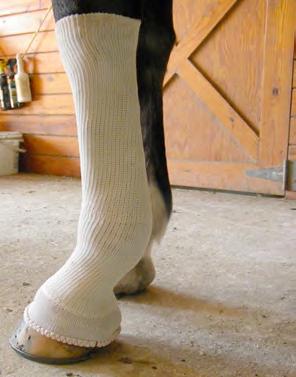
“Derma��s Goes Away!” Vet Recommended, Owner Referred, Horse Approved Worldwide
See our ad on page 47
See our ad for a coupon code!
Eggplant skinny jeans. A trendy high-waist skinny jean with a gorgeous light purple wash that’s fashionable and feminine for every season. They are Made in USA. See our ad on page 27 BulletBluesCa.com

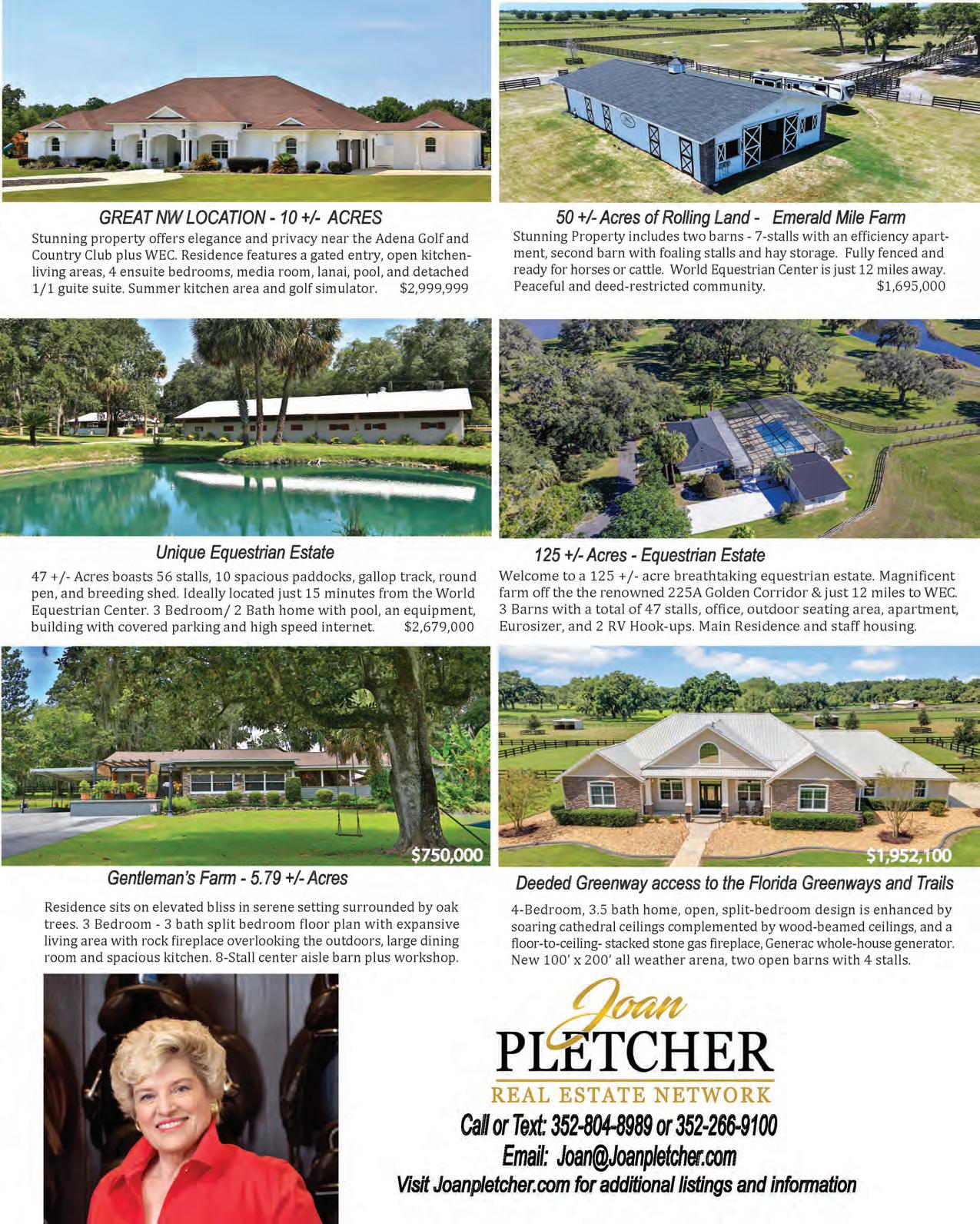
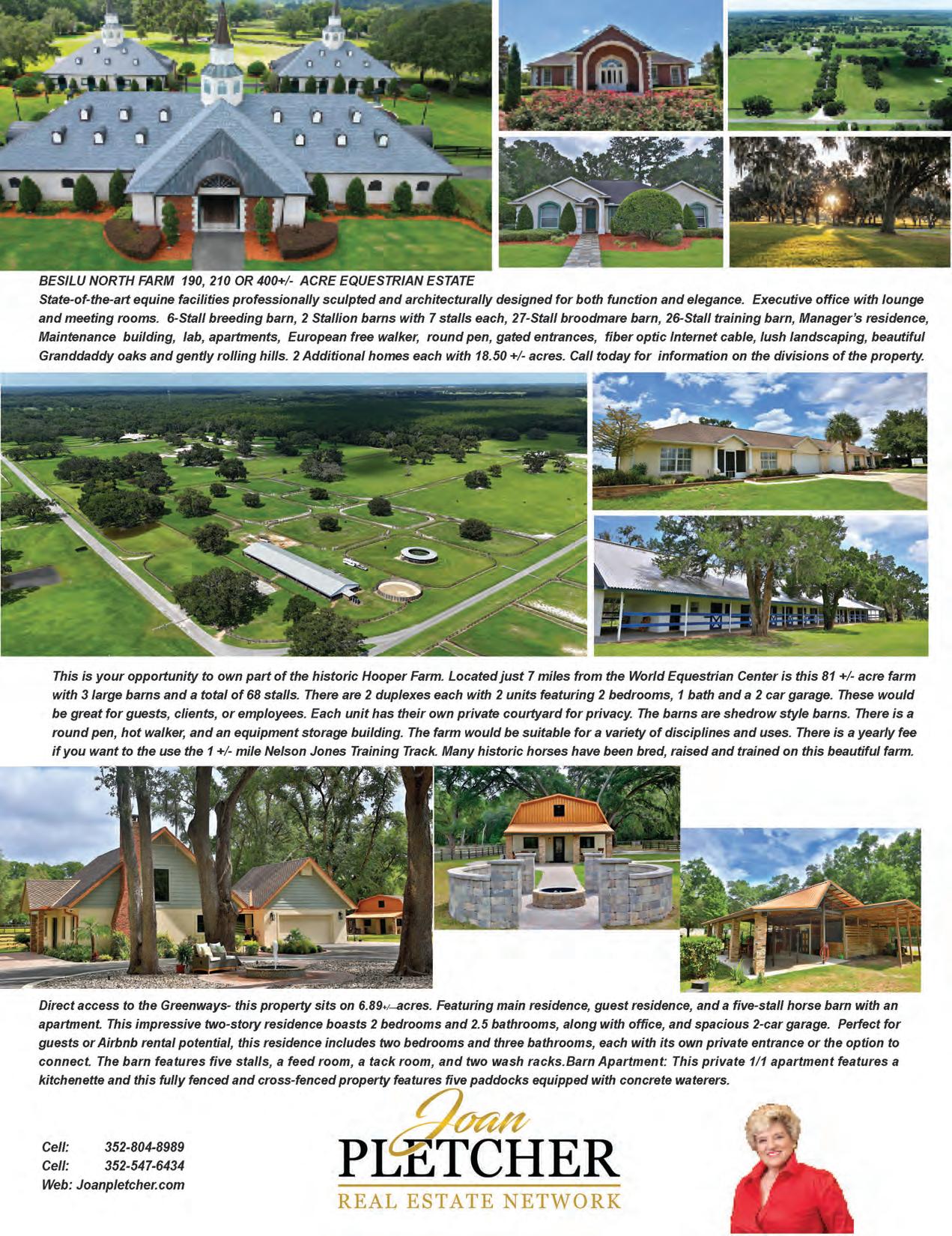

British equestrian fashion and heritage brand Equetech introduces a new A/W collection, combining the latest technical innovations with sustainability for enduring style, offering lasting quality and value for money.
Alongside core rider favourites from their staple collection, the multi-awardwinning clothing and accessories brand introduces an abundance of new and exciting additions.
This award-winning, core bestseller returns for winter 25 with a new, longer length design for greater protec�on against the elements, new pocket placement for improved func�onality, enhanced leg strap placement, and a revised ergonomic sleeve design. Proudly carrying the BLUESIGN label, this stunning coat is an en�rely sustainable garment for eco-conscious equestrians.
RRP: £219.95
Sizes: XS-3XL
Colours: Navy & Alpine Green
Halloween & Christmas Fun All Sewn Up! Equetech’s growing range of limited-edi�on accessories offers frigh�ully good op�ons for Halloween and bundles of joy for fes�ve fun, featuring a fabulous range of novelty hat silks, rider accessories, and horse wear. Discover new addi�ons on our web site!











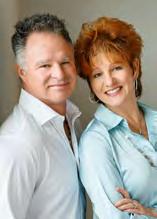

Equetech’s growing thermal collec�on features relaxed hoodies, stylish sweaters, toasty headwear, and the new Equetech Luxe Extreme Winter Riding Tights, providing seamless comfort and warmth in and out of the saddle. These winter hybrid breeches feature a high-waist design, deep phone pockets to the thighs, and a touch of sparkle in the gli�er logo.
RRP: £72.95
Sizes: XS - 3XL Black, Navy
As technology and innovation move forward, so does Equetech with four new additions to the ‘Inferno’ heated range, including updated versions of their sell-out Inferno Waterproof Heated Riding Gloves and Inferno Waterproof Heating Riding Coat.

Equetech Inferno Heated Waterproof Over-Breeches
Cosy Comforts

The Equetech Inferno Asymmetrical Heated Gilet is new for this season and features a showerproof fabric in a lightweight design with a cosy, warm, cruelty-free, bio-down fill. A unique asymmetrical collar adds a modern aesthe�c to this gilet, while offering protec�on against the elements. Integrated heat panels across the back of the gilet keep you warm in and out of the saddle. With three adjustable heat levels and between 2 and 6 hours of consistent heat, you can finally enjoy winter with horses!
RRP: £107.95
Sizes: XS-3XL, Navy
Real riders know that warm, waterproof over trousers can be bulky, noisy, and create bulk between the rider and horse. However, with the new Equetech Inferno Heated Waterproof Over-Breeches, these challenges are overcome through their func�onal design. Their shorter length cut allows riders to wear full riding boots without interference to leg aids, and their seat-free chaps design ensures the rider’s connec�on with the saddle is never compromised. A durable, waterproof and windproof outer with a lightweight insulated design and integrated heated panels for three levels of heat lasting between 2 - 6 hours.RRP: £89.95
Sizes: XS - XL
Black




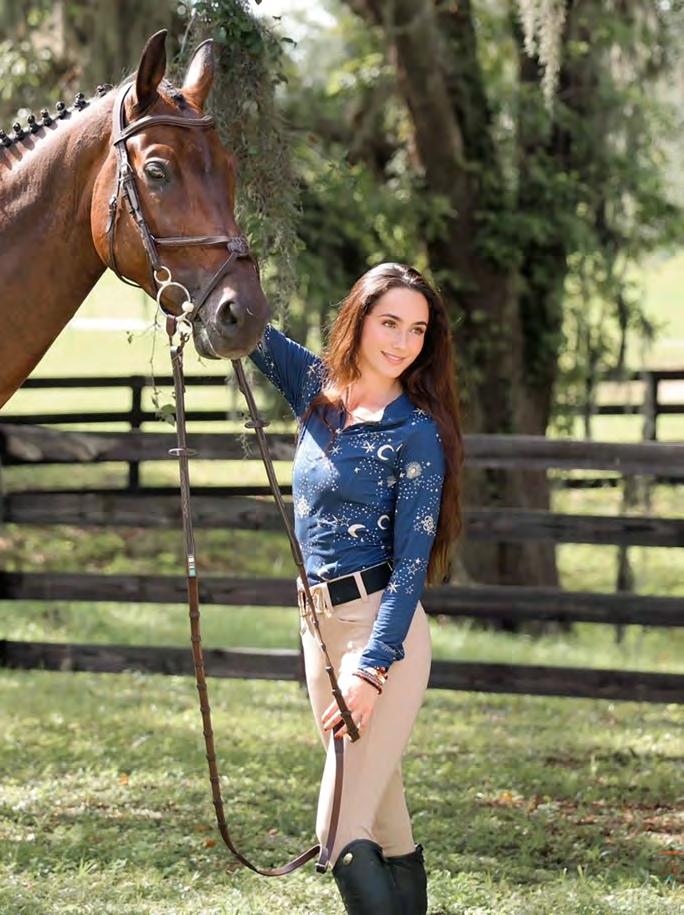



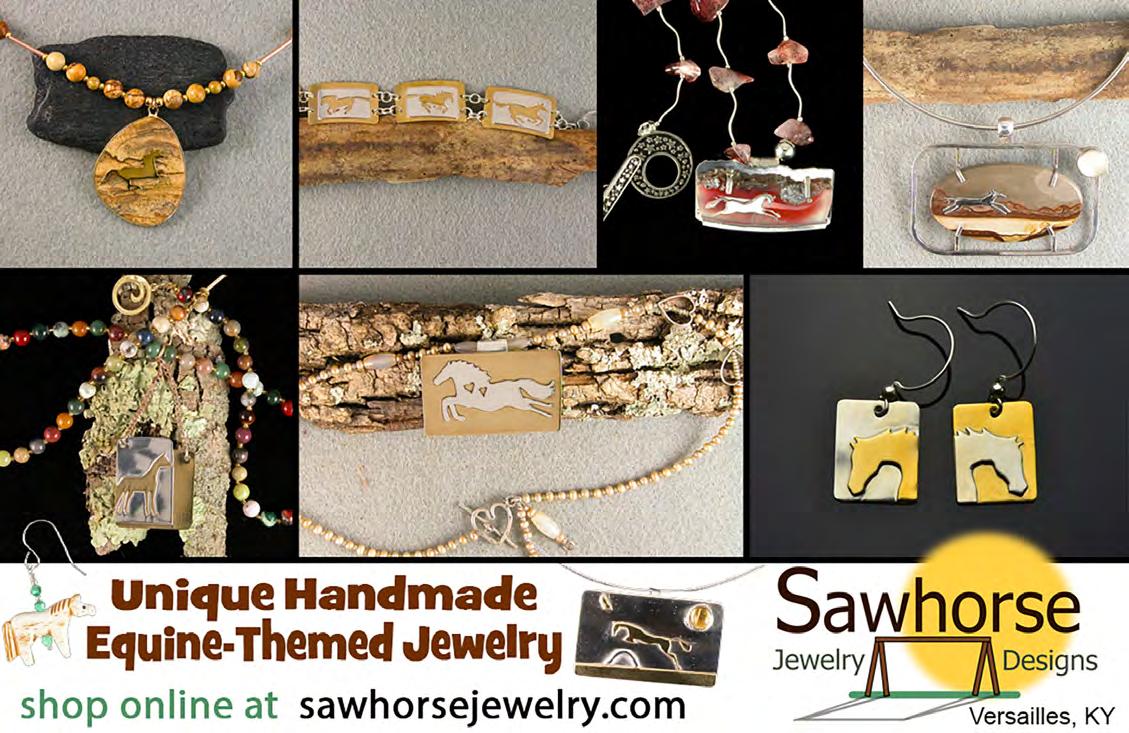

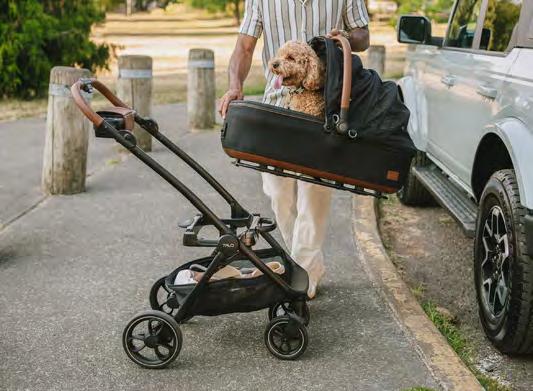
Tavo’s New Pet Protection System and its way more than just a 3-in-1 PET
The 3-in-1 PET
SYSTEM Maeve™ + Roscoe™The seat can be a�ached either to the vehicle base to serve as a protec�ve car seat or seat to the Roscoe stroller for on the go! It also has two different fabric op�ons that can easily be changed out to line the bo�om ma�ress—one that matches the canopy and another cozy sherpa op�on—along with an a�ached leash to keep your pet secure if you’re using the stroller with the canopy open.
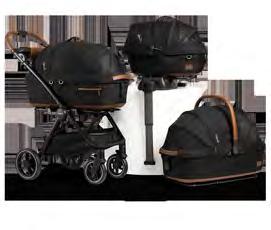
Tavo is a high-end product, but a worthy investment if you spend a lot of �me traveling with your pet. The carriers come with a 2-year limited warranty and a 60-day return policy.


Joan Bofill Amargós is a multidisciplinary Spanish artist whose work explores movement, intensity, and human connection across a range of subjects and forms. While his artistic practice extends far beyond the equestrian world, horses — and particularly the dynamic, high-stakes environment of polo — have become a powerful visual and emotional language in a distinct body of his work.These paintings are not traditional sporting scenes. They are expressive, gestural, and often fragmented — capturing not just action,but energy, instinct, and relationship. Whether through the charging form of a horse mid-play or the quiet, sculptural weight of a solitary head, Bofill uses equine imagery to explore themes central to his practice: tension, courage, vulnerability, and the beauty of connection between beings in motion. Rooted in classical technique and driven by emotional clarity, his equestrian works resonate with audiences who recognize in them something deeper than representation — a sincere attempt to portray the pulse of life itself. Bofill’s work has been exhibited in Europe, North America, and the Middle East, and is held in private collections that value its visceral honesty and artistic depth.
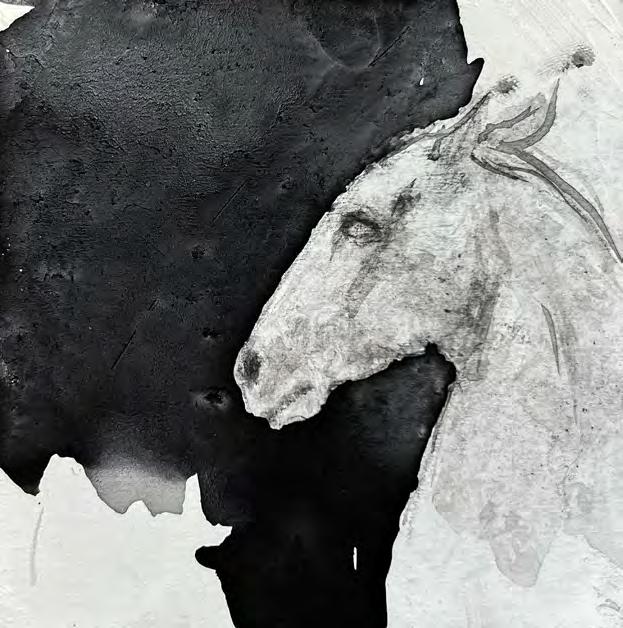


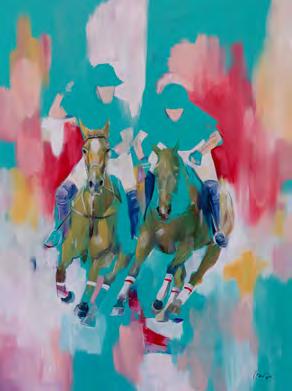


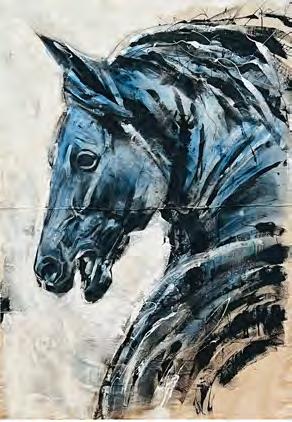


Mary Bridgman draws upon a broad range of cultural influences from Renaissance pain�ngs to modern approaches to her subject ma�er, employing many media. She has worked in the fashion industry as illustrator and designer for companies including Ralph Lauren and Ellen Tracy. She is on the faculty at the Fashion Ins�tute of Technology in New York City. Lifelong horsewoman she travels the world in search of horses.



Elaine Juska Joseph is fortunate to find many of her subjects on her own farm where she and her husband have a number of beau�ful dra� horses. Trained in illustra�on from Parsons School of Design, she creates lovely impressionis�c pain�ngs in oil and pastel.


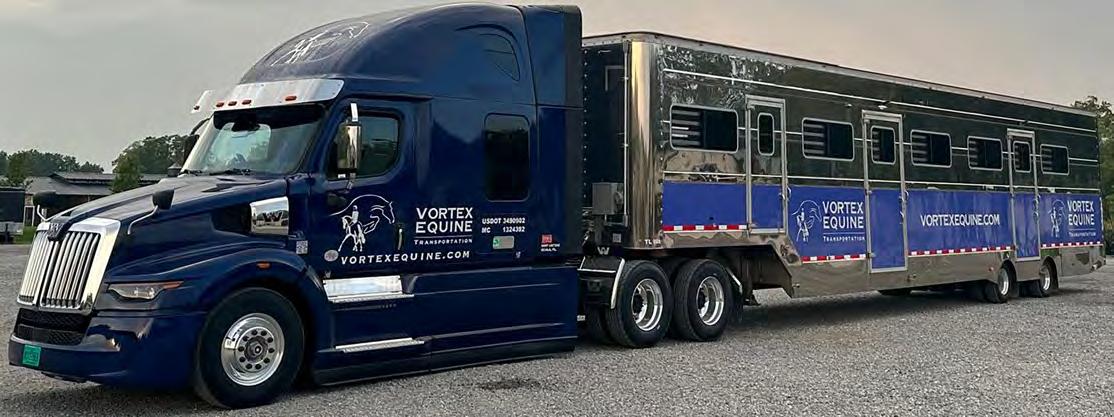
with L.A. Berry, Equinista
As a young man, FEI cer�fied interna�onal rider, trainer and clinician Peter Grigoriev was classically instructed in dressage at the Saint Petersburg (Leningrad) School of Olympic Reserve. While a protégé of Soviet Individual (1968) and Team (1972) Olympic Dressage gold medalist, Ivan Kizimov, Peter developed the skills that would give him the confidence to immigrate to the United States and launch Equilibrium Dressage Stables in Wellington, Florida. The lifelong instructor and saddle maker is also the founding force behind Dynamic Self Adjus�ng System™ compe��ve dressage saddles, whose flex-tree, close- contact engineering is designed to fit the horse in mo�on while delivering a secure and safe seat. Customers and clinic par�cipants alike a�est to the can-do posi�vism of his approach so let’s see what this dynamic horseman has to say.
HERS: -What did you learn from your first horse or instructor that still applies today?
HIS: The importance of correct position and proper attire (and hoping for major improvements to saddle building; those saddles did not help in achieving a balanced position at all.) I’m thankful to have learned dressage from a two time Olympic gold medalist and that a humane approach to training horses is the most efficient way.
HERS: What qualities do you like best in a horse?
HIS: Conformation, disposition and ability to learn. The rest, like movements, can be achieved with correct training.
HERS: -What qualities do you like best in a person?
HIS: Honesty and loyalty.
HERS: First job and how old were you?
HIS: Overlooking a herd of 60 horses during summer vacation in the southern USSR. I was 13.
HERS: Favorite quote?
HIS: “Everything should be as simple as possible, but no simpler”
HERS: Do you think saddle making more art or craft?
HIS: Both. I believe designing a tree or a saddle that meets all specifications of modern sport is art. Producing quality time and time again is craft. We [Dynamic] have a family of craftsmen who carry generational knowledge of saddle making.

As soon as a horse is moving, its back changes

HERS: What changes have you seen in saddle making since you started?
HIS: One change I have noticed is an increase in a more humane approach to the principles of making a saddle: saddles built on flexible trees. Unfortunately, flexible trees, unless reinforced with steel, flatten under a rider’s weight. Dynamic Saddles, with their technologically advanced DynamicTree™ supports weight without flattening or losing flexibility, which allows us to build on thinner panels for closer contact.
HERS: What do you hope still lies ahead for saddle design and ergonomics?
HIS: I hope to see more saddles on the market that fit horses in motion. It’s easy to say that a saddle fits while a horse is standing still. As soon as that horse is moving, its back changes and a conventionally treed saddle may no longer fit. I hope all saddle makers stop making saddles which do not reflect the requirements of modern sport, do not work with horses’ bodies and put riders in an all too common, unbalanced ‘chair seat.’
HERS: You can spend a day with any horseman and/or horse in history. Who is it?
HIS: Xenophon. I would like to hear his opinion on my saddles. His time was approximately 300 years before the first saddles appeared in the world. So his training methods and philosophy were based on full flexibility of the horse’s body. No restriction by

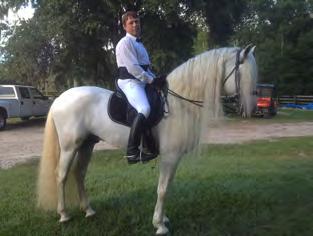
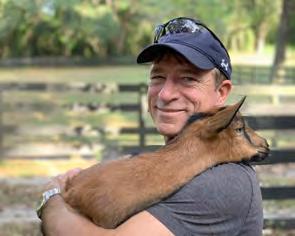
saddles built on traditional rigid trees. (Equinista’s note: Xenophon was a Greek philosopher and horseman, born 431 BCE, whose ‘On Horsemanship’ remains a highly regarded guide on training the horse and rider.)
HERS: You can invite three dinner guests (past or present, real or fictional). Who’s joining you and what’s served?
HIS: Dr. Temple Grandin, Denny Emerson and Jack London. I’d serve a baked sturgeon with its black caviar on the side, and some seafood harvested in the Mediterranean.
Learn more about developing dynamic equilibrium and finding maximum freedom of movement for you and your horse at DynamicSaddles.com.
Suggest a favorite horseman as an upcoming His & Hers guest to latheequinista@gmail.com.


Dr. Lori
By Dr. Lori Verderame

For many hobbyists, the best part of shopping for vintage stuff is the thrill of the hunt. While many believe that one man’s trash is another man’s treasure, I know that there are many pi�alls when it comes to buying and selling in the vintage and thri�ing marketplace. There are so many scams out there that you must watch out. While most columns only advise you to “Buy from a reputable dealer” or “Buyer Beware”, but rarely does anyone tell you who is “reputable” or how to “beware”. As usual, here are some of my �ps for folks on both sides of the vintage shopping fence.
Over the years, readers have come to realize that my columns are different from others since I regularly reveal the inside track in this field. I not only teach classes on how to sell old stuff for profit, but I tell folks how they are losing precious valuables from a yard sale or by throwing away items from Grandma’s estate.
Here are tips for shopping for art, antiques, and vintage objects at estate sales. Many people like to shop at estate sales—particularly the estate sales of famous people. We usually don’t hear about the estate sale of that little-known guy named Joe who rarely came out of his house hidden behind a row of pine trees but instead, some of the most successful and highly publicized estate sales are those with objects amassed by famous people or prominent members of the community. With items on the front lawn and displayed throughout the house, shoppers fantasize about how a famous actor or athlete lived with these objects that are now for sale from their estate. People agree that objects from a celebrity estate allow them to buy a piece of history.
What most people don’t realize is that often not all the items in an estate sale of the rich and famous belonged to a celebrity. Some estate sale organizers include objects from a celebrity estate sale combined with objects from someone else’s estate. Estate sale organizers realize that more buyers will want to shop at a famous person’s estate sale instead of an unknown person’s estate sale.

Also, some estate sale organizers realize that shoppers will pay more for a famous person’s antique quilt or mid century modern coffee grinder than some average person’s quilt or coffee grinder. Are some estate sale organizers pulling the wool over a buyer’s eyes? Remember, get proof that the vintage purse, Griswold cast iron frying pans, or 19th century landscape painting really belonged to that famous person.
Estate sales can be perfect places to pick up quality items at bargain prices but know the true market value of the objects you are purchasing and learn about the provenance before you pay.
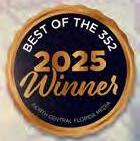


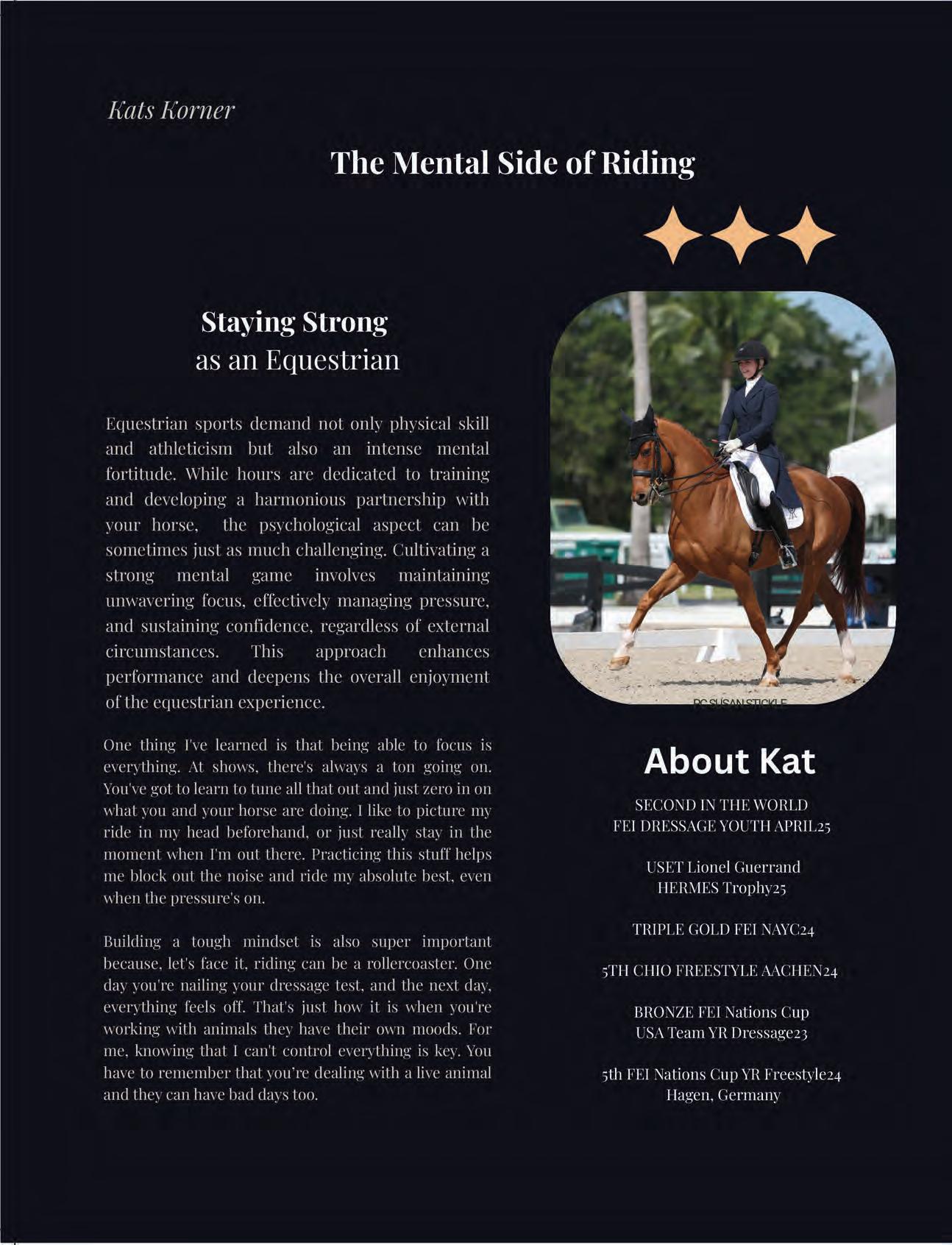
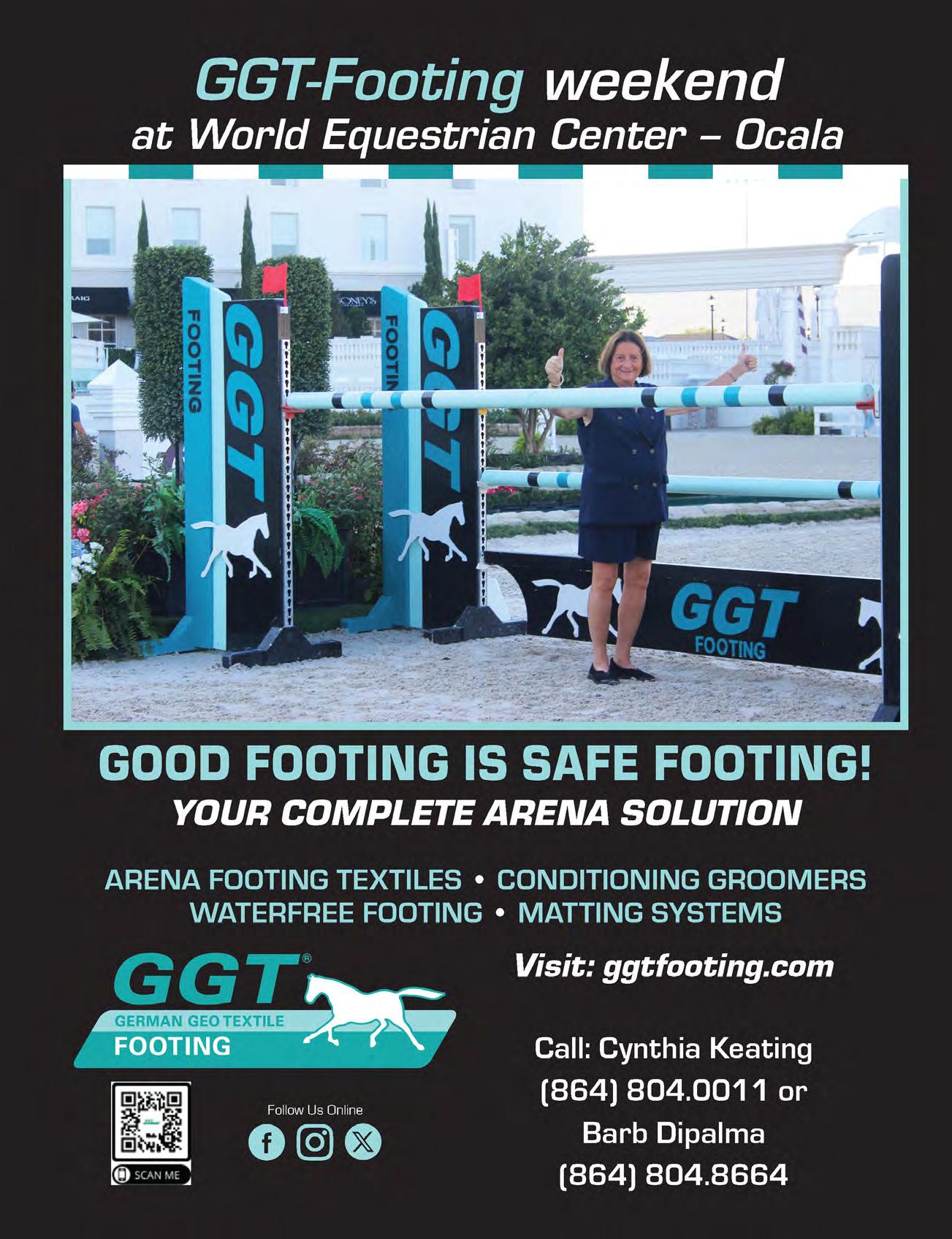

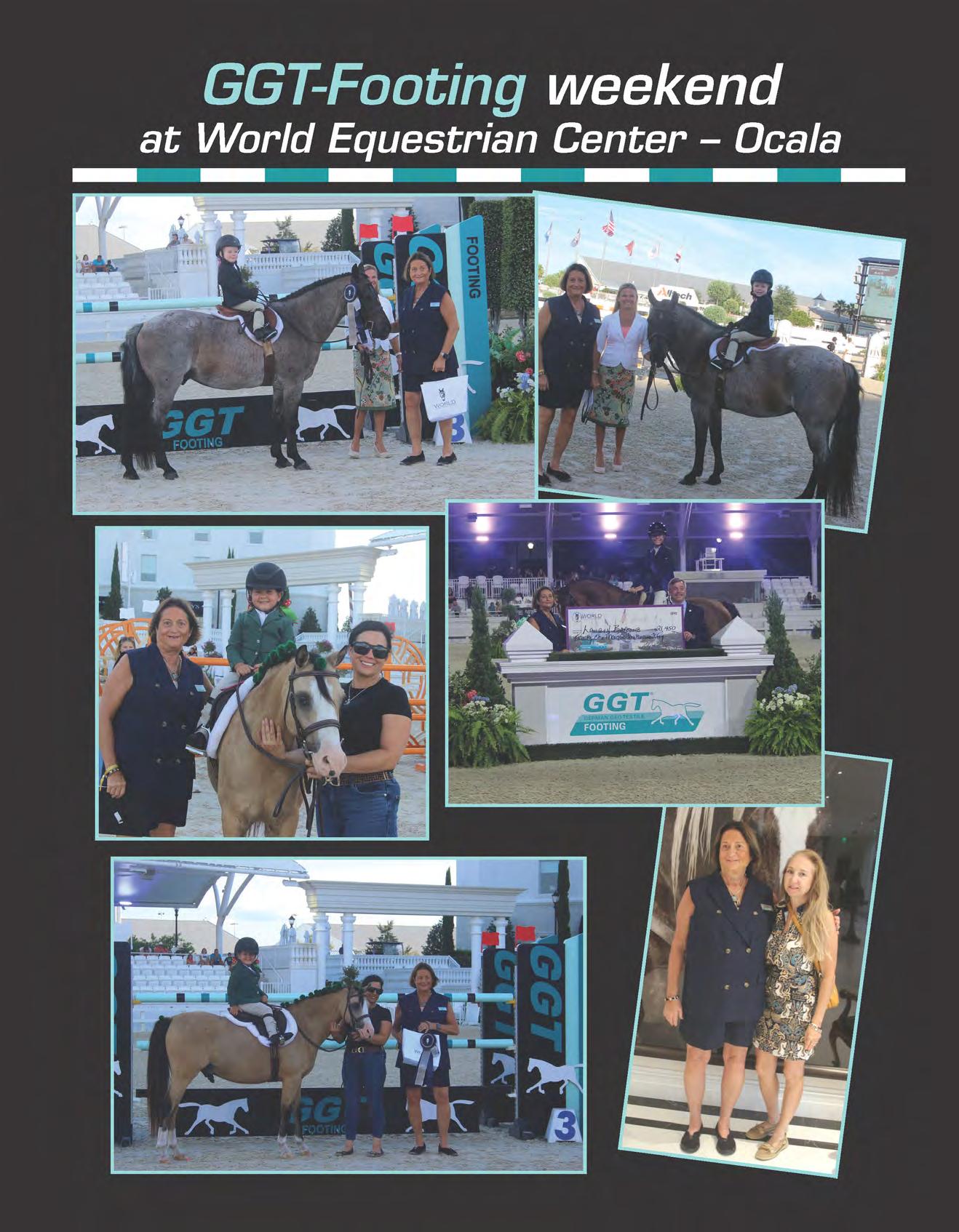

Many riders and trainers of today have experienced lessoning and training with Gunnar. He has been responsible for training horses that we may better know as equine heroes under the stardom of riders that saddled up those horses later (sadly, as with all trainers the positive end result is not always credited to the ones that put in the good basics at the beginning of a horse’s career). Gunnar has not just been successful in the ring himself but has passed along his wealth of knowledge to many others empowering them to chart their own success stories.
This book is a lovely read for a rainy day that casts a spotlight on a competitive rider that has well-earned his spurs with a tribute to those that have helped him do it.
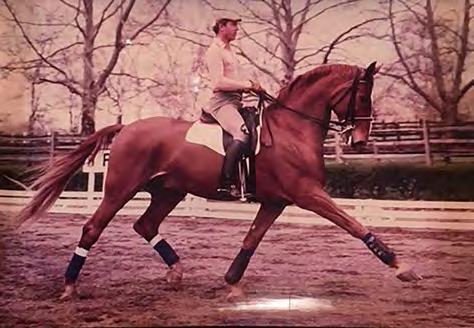
Review by Nikki Alvin-Smith
Ignited in his youth by a passion for horses, Gunnar Ostergaard is a well-known figure in the dressage world. This title chronicles his life journey with horses and the life that surrounded them is beautifully written in approachable style with the help of Pam Stone, a writer of some renown in her own right.
Equestrians will be delighted with this inside glimpse into what making a living with horses is all about, and how relationships with both horse owners and the horses themselves helped shape the life of Gunnar from young lad to experienced Grand Prix level dressage rider.
An easy read that provides interesting insights and down-to earth advice for the rider, along with accounts of past ups and downs in the author’s life. Gunnar presents both an historic overview of how dressage sport and training developed in three nations, as well as notes on how he navigated the horse world together with his beautiful wife Birgit (also a dressage rider), while never losing sight of his homeland of Denmark or the people that helped him along the way.

By Gunnar Ostergaard
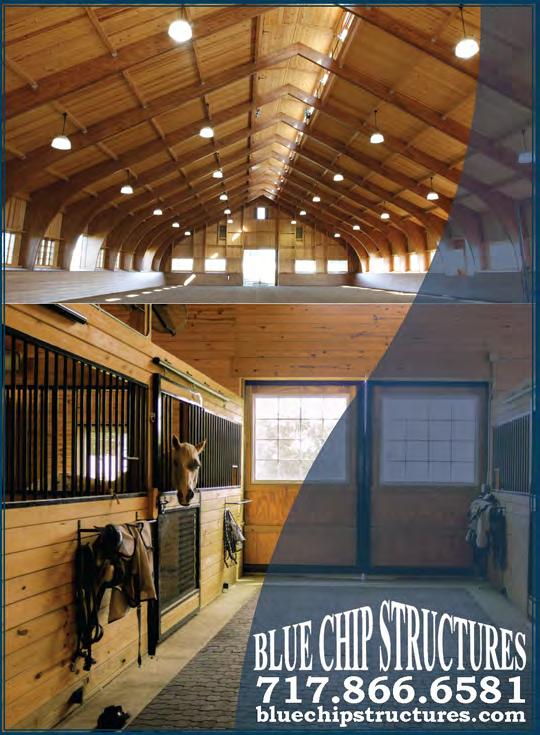
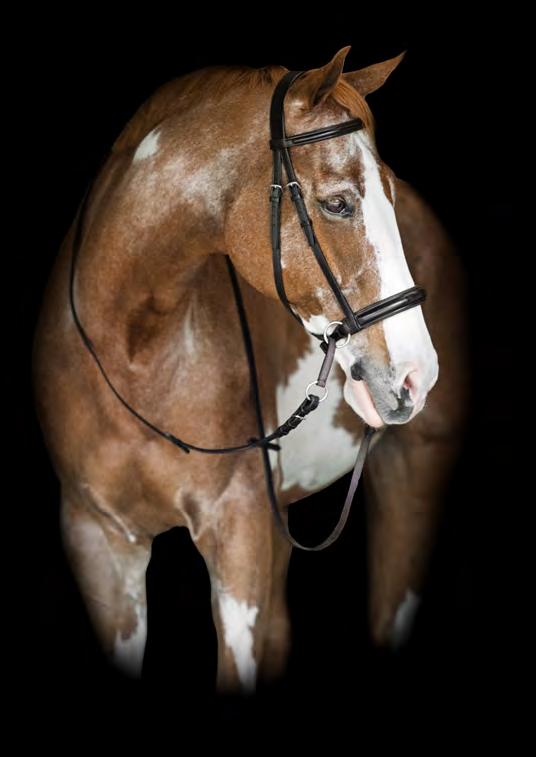
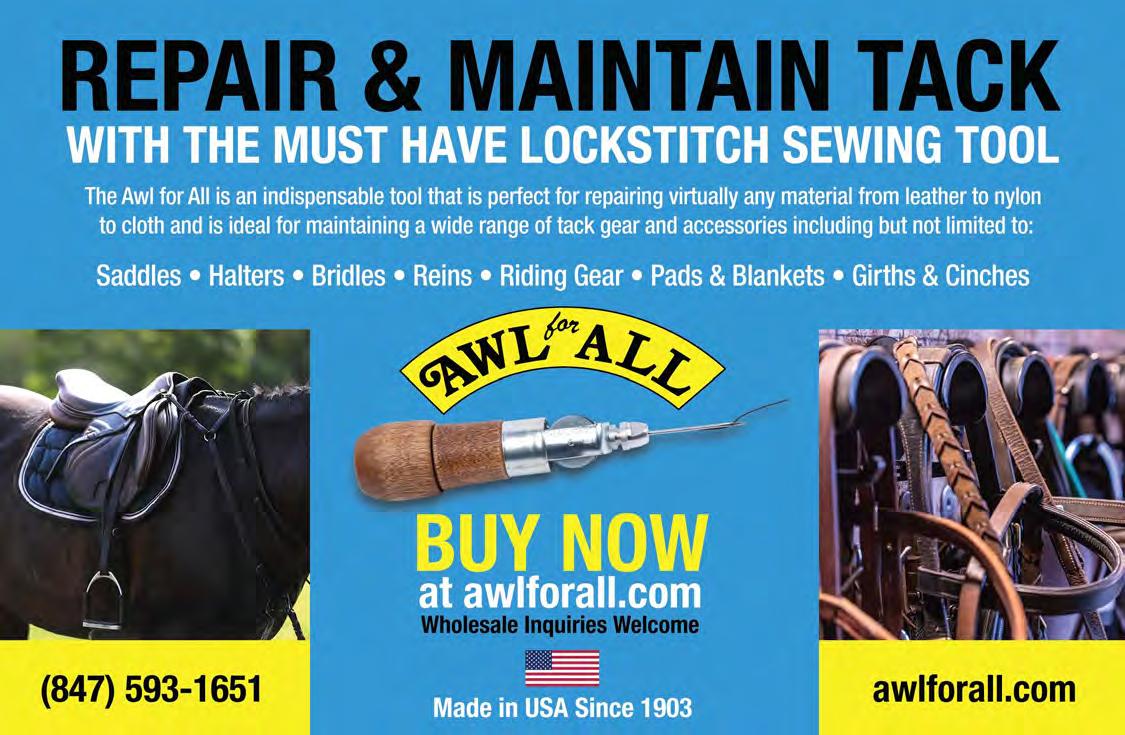
Emotional and physical equine health may go beyond what some immediately perceive.
Story and Photo By Jennifer Scalia
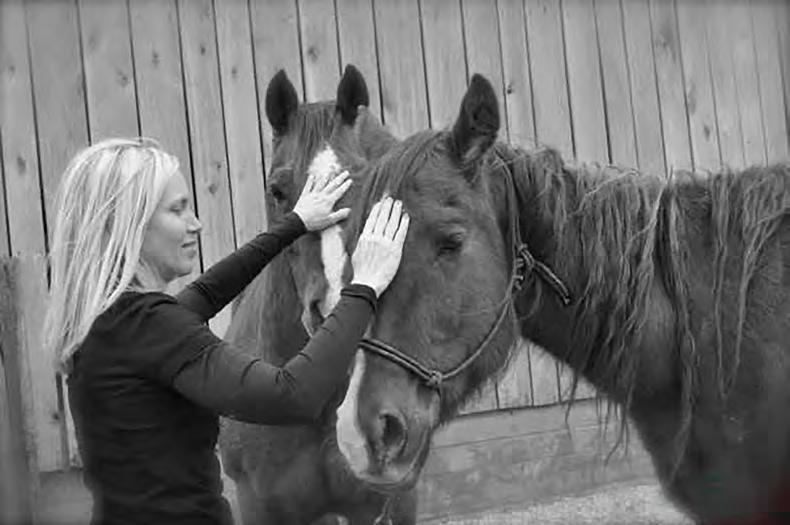
Horses have extraordinary fine tuned systems that pick up on our emotions and thoughts and they will mirror this for us but they also have a hard time differentiating and will unconsciously download our stress and painful emotions that we are having a hard time digesting.
Due to this empathic response to our own lives, our horse may become unwell in areas that are similar to our own. Or our horse may not be performing as well, seems depressed, anxious or has injuries or issues that don’t seem to be getting any better.
Although many find comfort in believing that these issues are random events, unless its environmental toxins, there is more often a somewhat mysterious bigger picture trying to reveal itself, in order to support your horses needs for healing and your own. This is actually far more comforting if you allow this concept to sink in.
Horses like all animals, do have their own individual reasons and trauma to be tended to therapeutically without a doubt. They have difficult and even daily experiences like us which leave an imprint asking for resolution. But since they are also highly empathic; this accounts for other areas that they may need energetic support that relates to their human companions or even other horses in their boarding facility.
We (animals and people) all have a field of energy around us which also connects us to one another. This field is affected by emotions and experiences. And this field affects our physical bodies. An injury for example, that seems just physical often comes with an experience of trauma and that trauma carries emotion which then cycles back affecting the physical healing process. The emotion can cause a block in the energetic system and stops a flow. This flow is needed for healing. Any emotion that is not able to be felt and freed in the moment (like a rabbit shaking its fear off after the chase of being prey) can potentially cause an energetic blockage.
Energy work is about finding the unseen “radio” wave signal that is out of tune and not only finding a way to tune it, but to also release the blocks to that signal and bring in the volume that equates to the flow and balance for wellness without interferences.
The beautiful part about working with horses energetically is that about 90 percent of the time they are very accepting and shift in a graceful way. And if they have an issue where all else seems to be failing, they will trust another way and stay hopeful when you can not.
I started working energetically with small animals back in 2009 and I had a deep longing to work with horses so I created a door and started first meeting with horses that had emotional or physical issues and later it also became part of my work to help horses as athletes. The athletic work was emotionally based so that they could focus and be an athlete in their own right meaning that even if their riding partner had performance anxiety, they could remain focused and “do the jump” efficiently without a distraction or taking on that emotion for their rider. They could also allow themselves to feel proud, not only being the legs of the rider, but in their own autonomous expression that they are also sharing alongside in a loving partnership performance.
The very first horse I worked with many years ago has always stood out. He was a strong quarter horse but he had stopped eating and was depressed and lacked any desire to do his normal work as well as allowed another horse at the barn to bully him. In a nutshell he had taken on the grief of his person who’s mother had died years ago yet he had not allowed himself to process that. This became a full circle energetic healing for both. This horse started eating again and became a strong working horse and started sticking up for himself after a long weekend of energy work.
I will wrap this article up for now but if you are interested in learning more you may find me at www.pemflove.com where I offer energy work and hyper focused PEMF therapy for pain.
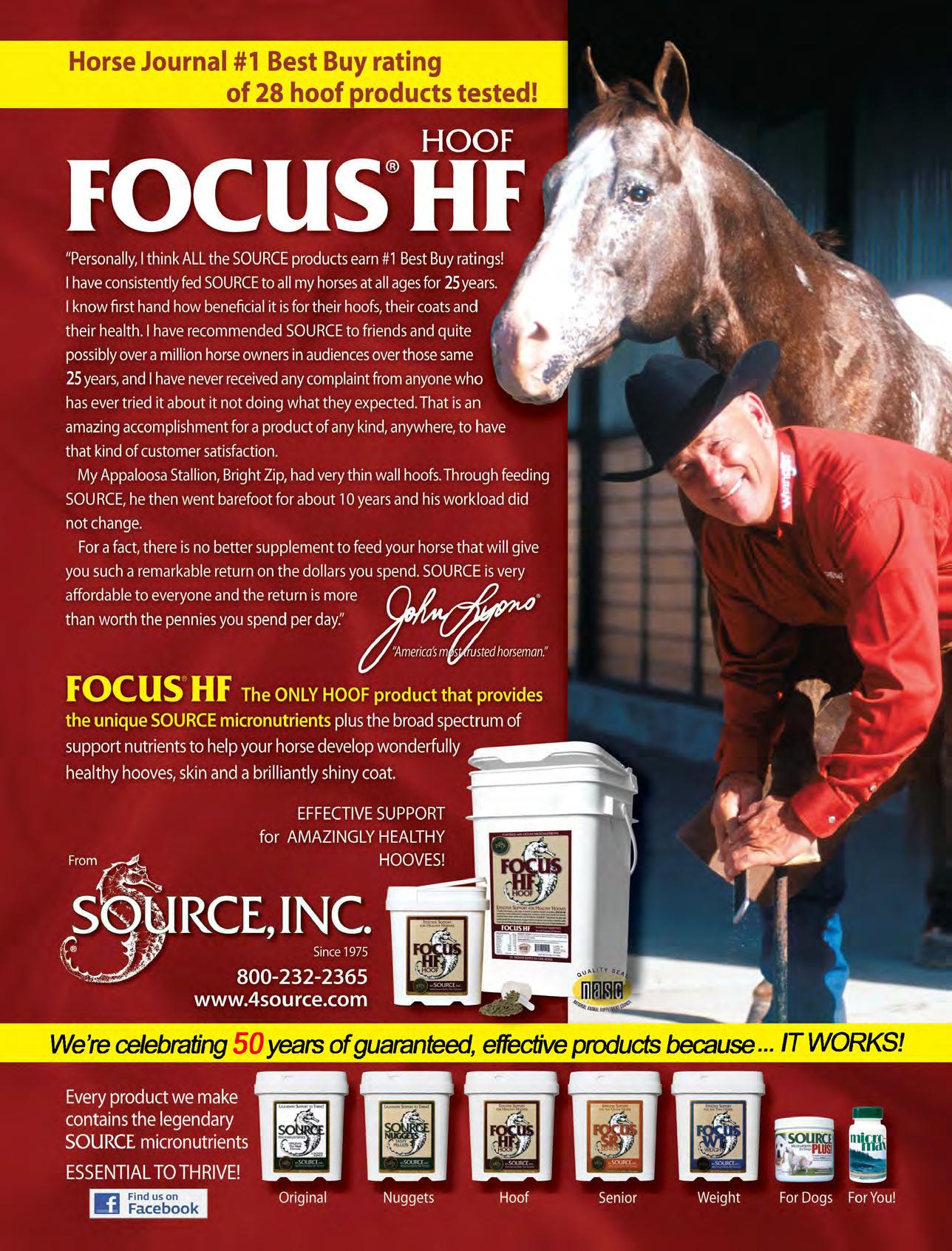
By Dr. Bill Ormstrom
In the world of elite equestrian sport, the difference between winning and withdrawing can come down to one crucial factor: physical soundness. Performance horses operate under high physical demands—�ght turns, long distances, repeated impacts, and fine-tuned maneuvers. Whether you’re jumping 1.50 meters, sliding into a reining stop, or galloping out of a cross-country water complex, your horse’s body must perform with both strength and precision.
That kind of performance requires more than just condi�oning—it requires resilience. And that’s where chiroprac�c care gives elite horses a compe��ve edge.
By addressing the spinal and musculoskeletal system before problems emerge—and aiding the body’s natural healing capacity when injury does occur—chiroprac�c care helps keep horses in mo�on and out of the stall.
It’s not just a recovery tool—it’s a key part of preven�on.
Even the best-managed horses can develop injuries. Causes range from acute trauma (like a slip, fall, or misstep) to chronic overuse, poor saddle fit, training imbalances, or subtle compensations over time. But many injuries don’t happen in isolation—they’re the result of accumulated stress on the body’s weakest links. Here’s how it plays out:
•A restriction in the poll leads to bracing through the neck.
•That transfers tension down the back, tightening the lumbar spine.
•The horse begins to favor one side to avoid discomfort.
•Load shifts to one hind limb—and eventually, a soft tissue injury occurs.
By the time a lameness is visible, the body has already been compensating for weeks or months. Chiropractic care aims to catch those biomechanical changes before they evolve into breakdowns.
The Role of Chiropractic in Injury Prevention
Preventing injury starts with maintaining functional symmetry. Chiropractic adjustments ensure that the joints of the spine and limbs are moving freely and evenly, allowing muscles to fire correctly and weight to distribute naturally. Here’s how chiropractic supports injury prevention:
• Reduces asymmetry: Balanced joint motion leads to balanced muscle development and stride.
• Improves proprioception: Adjustments fine-tune the body’s sense of movement and position, helping horses react quickly and stay coordinated.
• Minimizes compensation: Removing spinal restrictions prevents abnormal patterns of movement that can strain tendons and ligaments.
• Supports soft tissue: When joints move correctly, surrounding muscles and fascia aren’t overworked or unevenly loaded.
Routine chiropractic care doesn’t guarantee a horse won’t get injured, but it dramatically reduces the risk—and can alert you to small problems before they escalate.
Chiropractic After Injury: Enhancing Recovery
When injuries do happen, rest and rehabilitation are critical. But rest alone isn’t enough. If the body doesn’t recover in balance, it can set up new patterns of dysfunction.
Chiropractic care plays a vital role in post-injury rehabilitation by restoring proper joint function, improving circulation, and resetting neuromuscular coordination.
Let’s look at a few examples:
1. After Soft Tissue Injuries (Tendon, Ligament, Muscle Strain)
• Chiropractic care helps ensure the spine and pelvis are aligned during stall rest or hand-walking periods, reducing compensatory strain.
• As exercise resumes, adjustments keep the horse symmetrical, preventing re-injury.
2. After Joint Injections or Surgery
•Chiropr actic does not replace medical treatment but complements it by optimizing the surrounding structure.
• For example, a horse recovering from a hock injection may compensate through the sacroiliac joint or lumbar spine. Chiropractic keeps those areas functional to support full recovery.
3. After a Fall or Slip
• Even if no lameness is detected, horses that fall or get cast often develop spinal restrictions.
• A chiropractic exam can detect hidden dysfunction before it leads to secondary issues.
The Nervous System’s Role in Healing
One of chiropractic’s most powerful benefits is its impact on the nervous system. The spinal cord is the communication highway between the brain and body. When joints are restricted or irritated, they can interfere with this signaling
Proper alignment:
• Enhances motor coordination
• Supports immune and inflammatory responses
• Facilitates faster healing by restoring optimal nerve input to tissues
In other words, chiropractic doesn’t just affect structure—it improves function at a systemic level.
Post-Injury Saddle Fit and Compensations
An often-overlooked aspect of rehabilitation is how a horse’s posture and musculature change after an injury. After even a mild strain, horses may carry themselves differently—leading to poor saddle fit, altered gaits, or behavioral issues under saddle.
Chiropractic can:
• Restore postural symmetry
• Allow the horse to lift its back properly
• Help the horse rebuild correct muscle tone after atrophy or disuse
• Assist your saddle fitter in determining what fit is appropriate as the horse’s body changes
By resetting the spine, chiropractic creates a better foundation for all other recovery efforts—whether it’s acupuncture, massage, physical therapy, or reconditioning.
“ANIMALS SHARE WITH US THE PRIVILEGE OF HAVING A SOUL.”
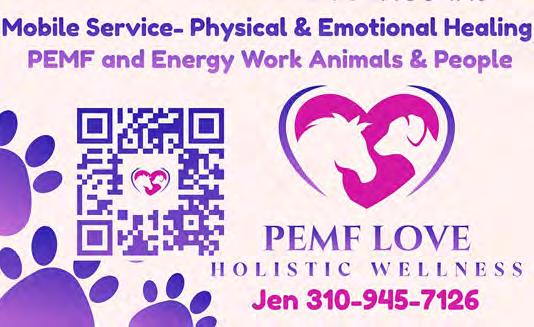

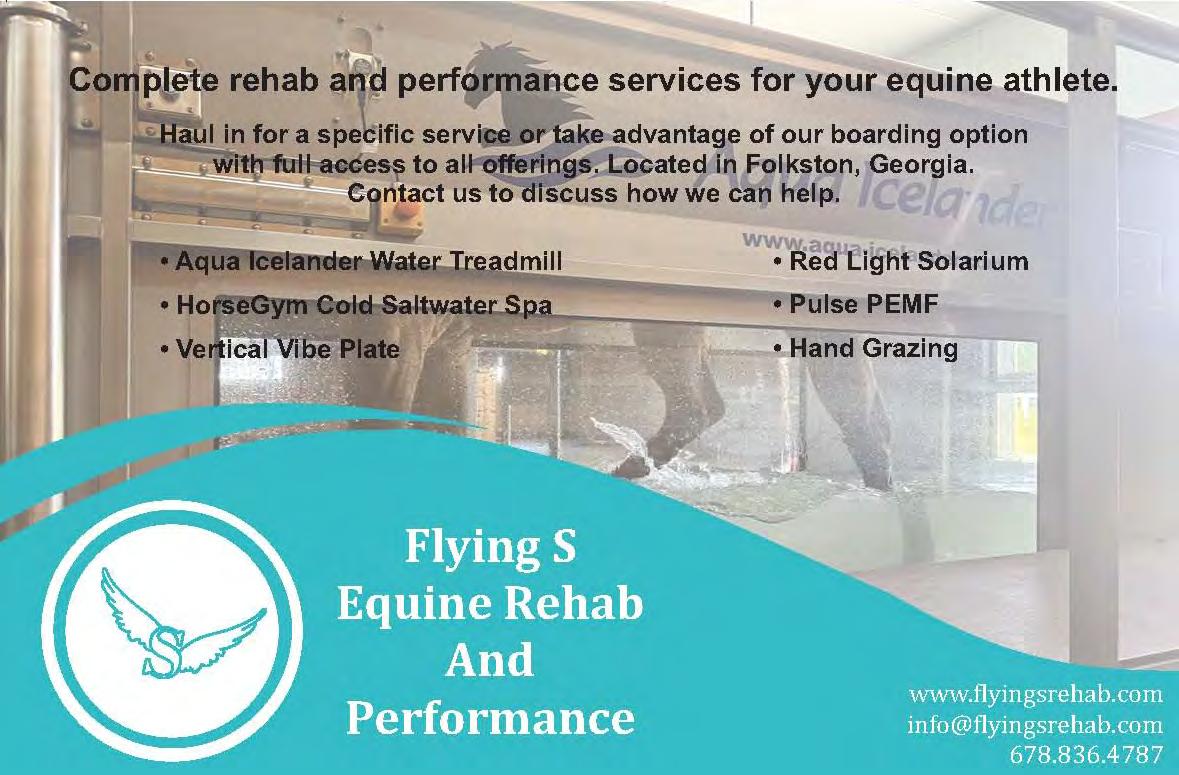
Elite horses are cross-trained for longevity—ground poles, trail rides, hill work, aqua treadmills, and more. These activities are designed to strengthen different muscle groups and prevent repetitive strain.
Chiropractic fits perfectly into this strategy. As horses move in new ways, they may develop temporary restrictions or areas of tightness. A regular adjustment schedule ensures that new demands don’t turn into new problems. Chiropractic makes cross-training more effective by helping the horse adapt and integrate movement without dysfunction.
Some horses struggle emotionally after injury. They become anxious, resistant, cinchy, or dull. Often, this isn’t just a training issue—it’s lingering physical discomfort. Pain doesn’t have to be severe to affect behavior. Subtle restrictions can create irritability, anticipation of discomfort, or difficulty focusing.
Chiropractic care often results in visible emotional improvement:
• Calmer attitude
• Softer expression
• Greater willingness to work
• Fewer resistance behaviors
These changes support both physical and emotional recovery, helping the horse return to confident, focused performance.
Chiropractic is most effective when it’s part of a coordinated care plan. In injury prevention and recovery, collaboration with veterinarians, farriers, trainers, and bodyworkers is essential. Certified animal chiropractors are trained to recognize when chiropractic is appropriate—and when referral is needed.
Look for professionals certified by the AVCA or IVCA, and be sure they’re willing to share records and communicate with the rest of your team. Chiropractic works best not in isolation, but as part of a holistic performance strategy.
Conclusion: Healthy Motion is Winning Motion
Injury prevention isn’t just about wrapping legs and warming up—it’s about understanding the mechanics of movement and the signals the body sends before failure occurs. Recovery isn’t just about rest—it’s about restoring balance, mobility, and confidence.
Chiropractic care provides both prevention and support, helping elite horses stay sound, recover fully, and perform their best. Whether you’re protecting a young athlete’s future or bringing a seasoned champion back to form, the spine is the place to start.
Because in equestrian sport, you can’t afford to lose momentum—and a healthy spine keeps you moving forward.

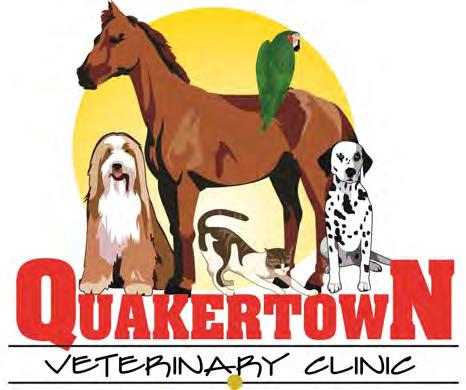
large animal doctors are also available Mon-Fri for routine on-site or in hospital calls.
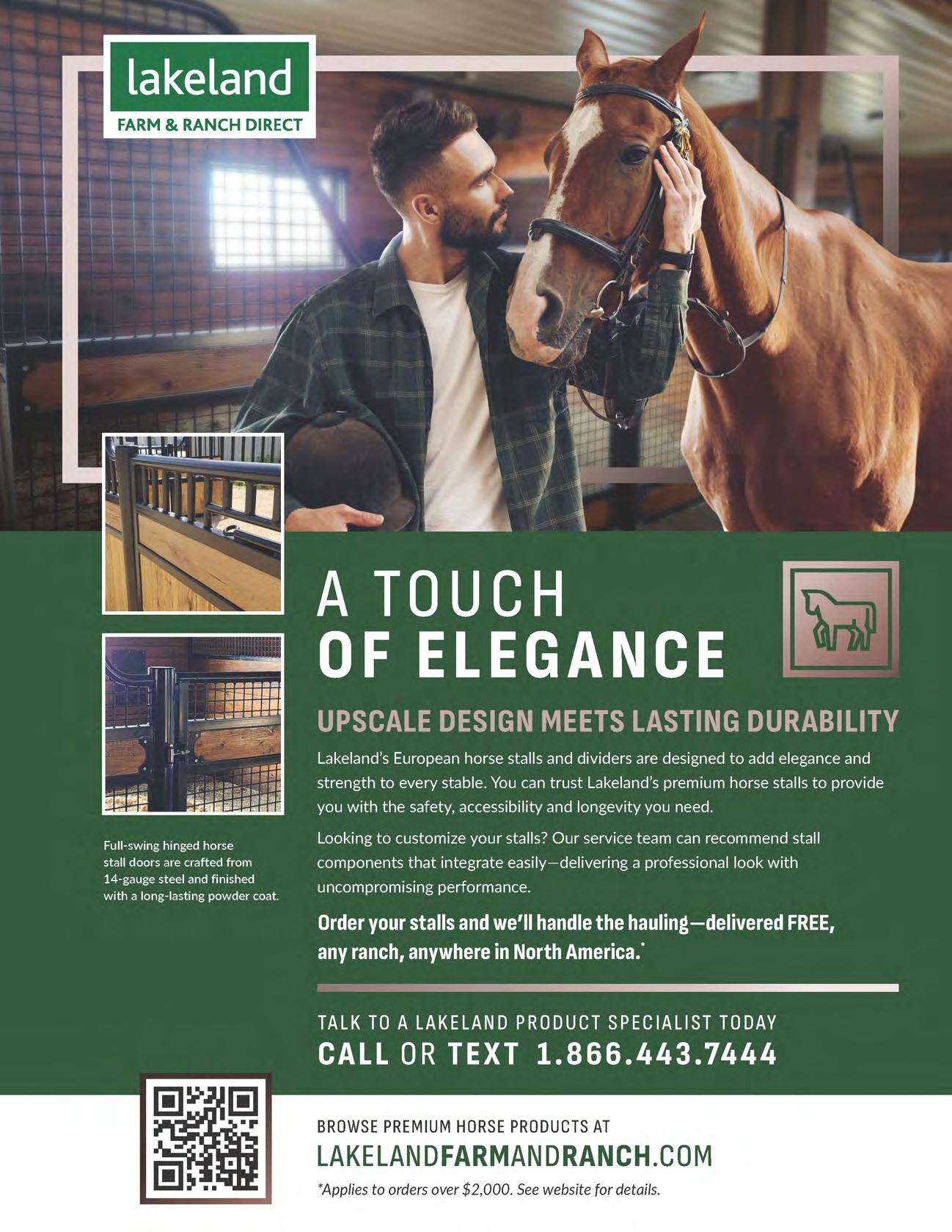
Presented by Kingsview Partners | Sept. 23–28, 2025

This September, an equestrian legend rides into town—and she’s bringing a masterclass with her.
As part of the 50th Anniversary celebra�on of Dressage at Devon (DAD), fans will have the rare opportunity to learn from Ingrid Klimke, one of the most accomplished and admired riders in the world. A two-�me Olympic gold medalist in even�ng and a decorated Grand Prix dressage compe�tor, Ingrid brings a unique blend of boldness, brilliance and classical horsemanship to every saddle she sits.
She’ll headline The Kingsview Partners Dressage at Devon Masterclass, Presented by Capital Square on Thursday, Sept. 25, offering a rare look into the methods of a true master. For even�ng fans who know her from cross-country dominance, and dressage lovers who admire her elegance in the ring, this masterclass is a front-row seat to everything we love about top-level riding.
This moment is more than just a celebra�on of 50 years of excellence in Devon, it’s a nod to the power of nonprofit equestrian organiza�ons like Planta�on Field Equestrian Events and Dressage at Devon suppor�ng each other’s missions. Planta�on Field and DAD strive to bring elite sport and horsemanship to the community and this partnership showcases how strong our local horse world can be when we cheer each other on. And all this happens right here in Chester County.
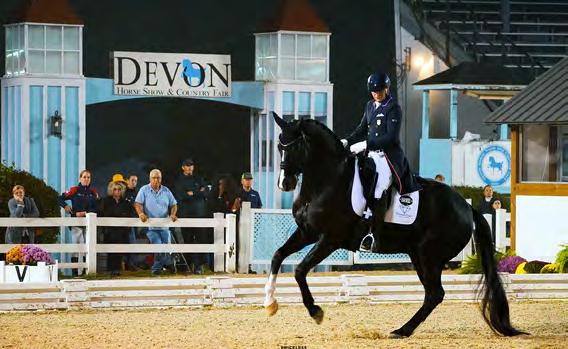

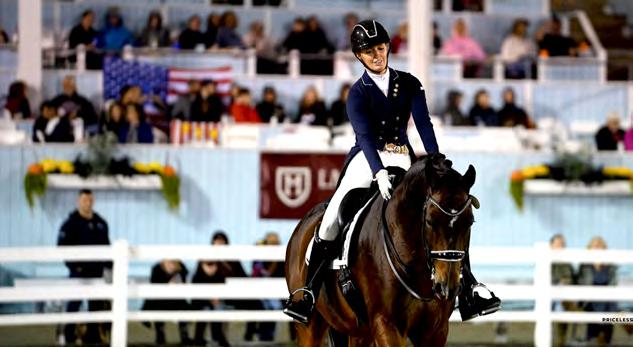
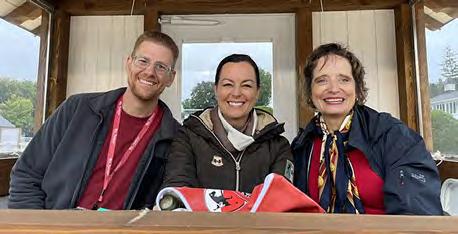



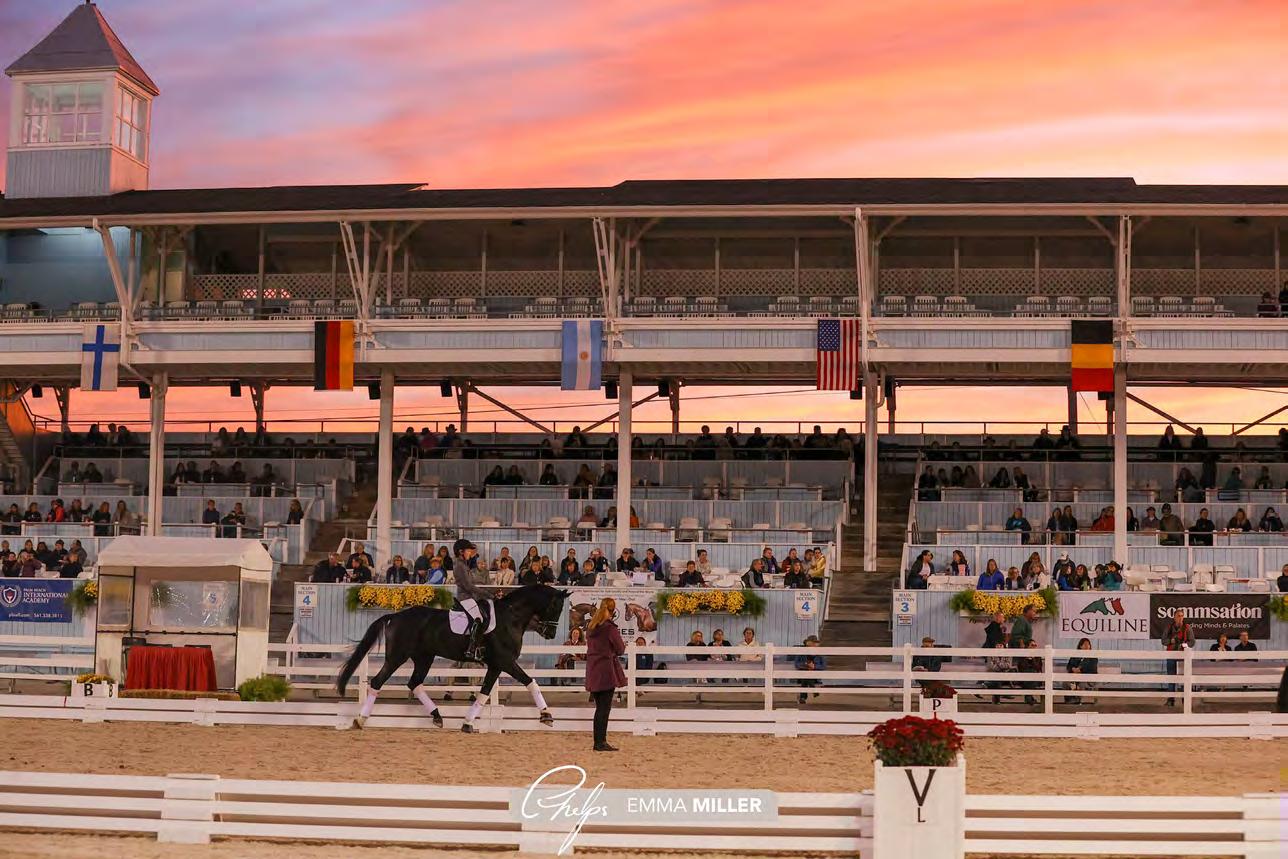
A Golden Anniversary
If you’ve ever strolled the streets of Devon in late September, you’ve probably heard the buzz coming from the corner of Route 30 and Dorset Road. That’s Dressage at Devon: part elite competition, part community gathering and 100% iconic.
This year, the show is celebrating 50 golden years of dressage excellence. What started in the 1970s as a grassroots show organized by the Delaware Valley Combined Training Association (DVCTA) has grown into one of the most prestigious dressage events in North America. Today, it attracts Olympic hopefuls, international stars and the sport’s most promising young horses—all just a short drive from Plantation Field.
The Breed Show: Young Talent on Parade Things kick off with the three-day Breed Division, where foals, yearlings, and breeding stock are judged on movement and conformation. If you’ve never seen a well-bred foal float across the Dixon Oval, you’re in for a treat. On Tuesday, the Individual Breed Classes featuring more than 20 breeds and Pony Classes, sponsored by Kickapoo Ponies, are followed by the fan-favorite Parade of Breeds, a colorful celebration of equine diversity which includes the winners from all the breed classes. Wednesday includes a variety of classes including Materiale, Young Horse/Sport Horse, and Mature Horse/Breeding classes.
This division isn’t just for fun, it’s a USDF Breeders Championship Series Qualifier and the East Coast Final, making it a must-attend for top breeders from across the country.
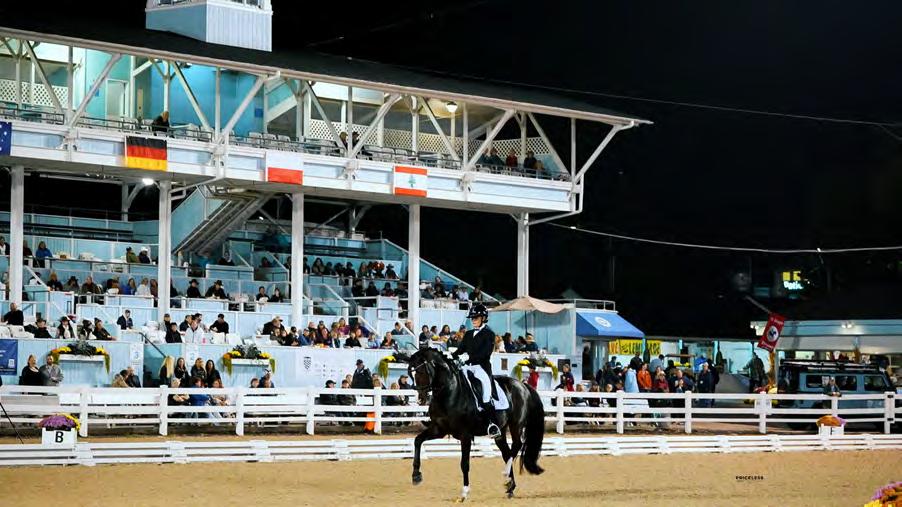
The Performance Division: Dressage in the Spotlight
Beginning Thursday, the Performance Division takes over, featuring four days of international and national-level dressage competition. Many classes are FEI-level, including the Grand Prix and the highly anticipated Saturday night Grand Prix Freestyle, where riders perform choreographed tests to music under the lights.
You’ll see World Cup qualifiers, CDI3* and CDI-W competitions, and classes for Children, Juniors, Young Riders, and Adult Amateurs. Whether you’re into polished piaffes or just want to witness Olympic-level artistry, the Dixon Oval delivers.
Want to add your opinion? Download the Spectator Judging app sponsored by HorseFlight and score Saturday night’s rides from your seat.
One of the hallmarks of Dressage at Devon is its commitment to education and this year’s schedule is packed with interesting, approachable educational events. A few highlights:
• Wednesday, Sept. 24 (1–4:30 p.m.) – KWPN-NA’s introduction to linear scoring with a live horse demo.
• Thursday, Sept. 25 (9 a.m.– noon and 1--3 p.m.) – Dr. Hilary Clayton talks tack fit, training and how to work in harmony with your horse. USDF University credit available.
• Thursday, Sept. 25 (4-5 p.m.) – Pop-Up with Ingrid Klimke: Book & Shirt Signing



• Thursday, Sept. 25 (6 p.m.) – The Kingsview Partners Dressage at Devon Masterclass with Ingrid Klimke Presented by Capital Square. Ingrid’s an Olympic legend and she’ll be sharing her insights live in the Dixon Oval. Tickets for Thursday are available at dressageatdevon.org.
• Thursday, Sept. 25 (8 p.m.) – Join us for the Ingrid Klimke Masterclass Meet and Greet Reception sponsored by Fitchbauer Saddles and presented by Mary Phelps Markel Insurance. Purchase tickets online.
• Friday, Sept. 26 – Enjoy cutting-edge veterinary insight with the Penn Vet Forum, followed by a deep dive into instructor development at the USDF Inside Track session with available USDF University credit.
• Saturday, Sept, 27 – Lunch and Learn in the Picnic Grove features four hours of free programming on nutrition, tack, therapy and more.
A Battle of the Grand Prix Grooves
If you’re looking for something with fabulous flair, don’t miss the Kingsview Partners Dressage at Devon Dance-Off, back for its second year on Friday, Sept. 26 at 5:30 p.m. This crowd-pleaser pits elite dressage riders against one another in freestyle “battles” set to live music—and judged by celebrities. It’s fun, flashy and surprisingly fierce.
What began as a 1970s arts & crafts market is now one of the most beloved vendor areas in the sport. The Fall Festival Shops at Dressage at Devon are packed with unique finds—from artisan tack and rider fashion to antiques, art and gourmet food.
Hungry? You’ll find crab cakes, burgers, truffle fries and upscale eats in charming outdoor cafés. The Pub offers full coverage of the competition on big screens so you can eat, drink and still catch every canter.
And don’t miss Shop, Sip & Stroll on Wednesday evening (5–7 p.m.), where you can sip wine as you peruse the offerings and select vendors donate a portion of proceeds back to the show.
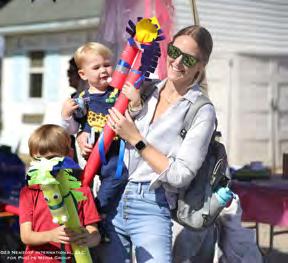

On Sunday, Sept. 28, things get a little more playful. Start the morning with Musical Freestyles & Mimosas, a relaxed brunch experience from 10 a.m.–2 p.m. Add some local chocolate from Devon’s artisan vendors and you’ve got the perfect morning pairing.
Meanwhile, Dressage Explorers Day runs from 10 a.m.–1 p.m. with stick horse competitions, scavenger hunts, and equine-themed games that engage kids and adults alike. It’s a great way to introduce young riders and future fans to the joy of dressage.
For those of us in Chester County, Dressage at Devon is more than just a big show, it’s part of our local history and tradition. We’re lucky to have an international-caliber event just minutes away, steeped in local history and community spirit.
So whether you come for the shopping, the sport, the learning or just the chance to see some very fancy horses up close, we hope to see you there.
After all, a 50th anniversary only comes around once.
Dressage at Devon
Devon Horse Show Grounds, Devon, PA September 23–28, 2025
Tickets & full schedule: dressageatdevon.org
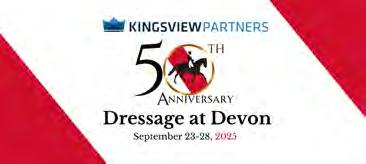
Equine Performance Partners is the perfect source, whether you are looking for a Hunter/Jumper or a Dressage star, to find your new equine partner, or have your horse’s training advanced. There are lush pastures for young horses to graze, socialize and exercise. Every prospect receives the developemental training that young horses need.
New prospects are imported from Germany several �mes each year.
Horses are developed with an individualized program to build their strength, suppleness, and condfidence.
You are welcome to come for a trial with one of our sale horses for several days to engage in a repoir building experience, allowing you to fully familiarize yourself with a prospect.
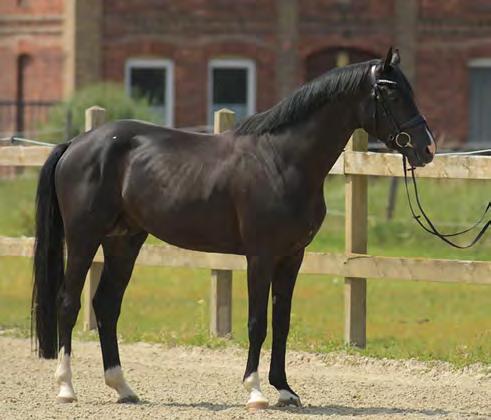

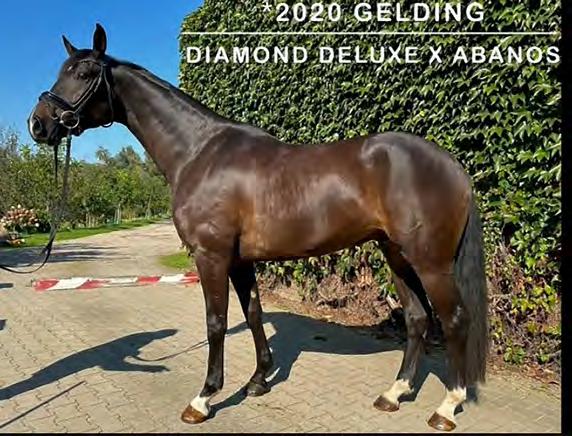

Our newly renovated private gated equestrian center with on-site owners.
Board and Training Packages Available!
10 minutes from WEC Ocala!
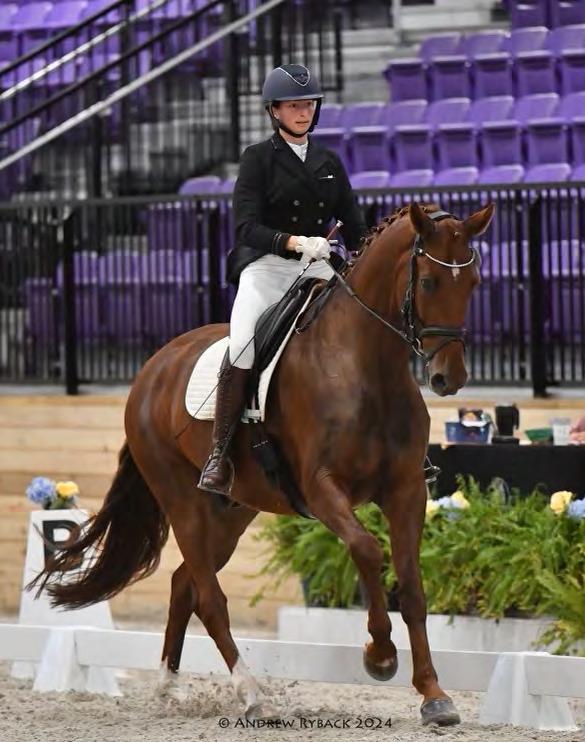
10 Dry Stalls Available OPTIONAL:
• Two Newly Renovated 3 Bed/2 Full Bath Homes Each With 2 Horse Run-In/Stable With Tack Room.
• Newly Renovated Barn Apartment With Porch and Laundry
Call for availability and to reserve your space.
Our new farm features:
•40 acres with lush pastures
•12 x 12 matted stalls with fans and auto water
•Wash Stalls with hot and cold water
•Multiple Tacking Areas
•Climate Controled Tack Room
•Covered & Outdoor Dressage Arena
•Jumping Field
5-15 Minutes From Multiple Quality Equine Veterinary Facilities
352-409-6616 or 352-620-5558
Let Falk and Victoria bring out the best in you and your horse!
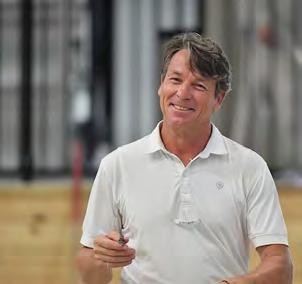
www.equineperformancepartnership.com
www..com

The Capital Challenge Horse Show continues its legacy in 2025 as a premier horse show destination in 2025 celebrating its 32nd edition at Prince George’s Equestrian Center from September 24-October 5, 2025.
Each year since 1994, the Capital Challenge Horse Show has hosted top-notch competition, drawing exhibitors from across the country to Upper Marlboro, MD. The show has evolved to offer a comprehensive schedule of hunter, jumper, and equitation classes across its 12-day run, including several prestigious year-end championship classes.
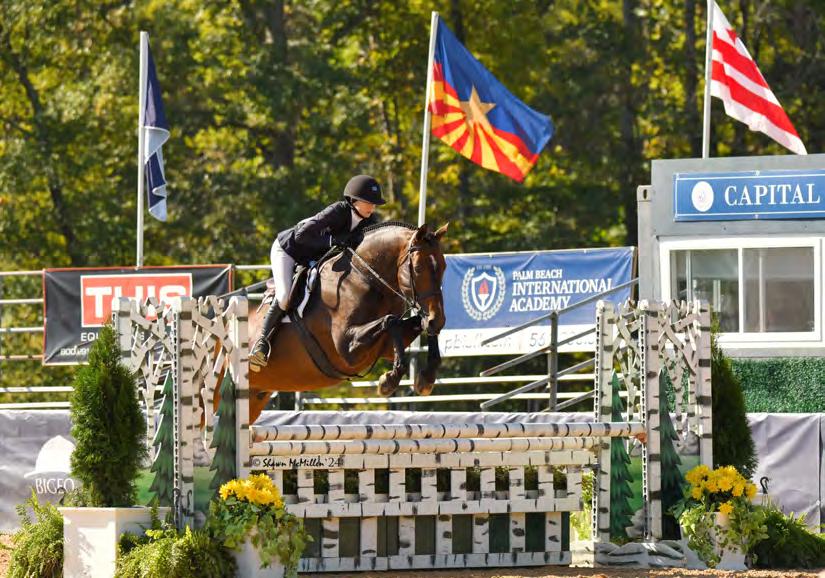
Hear from some of last year’s winners on what makes Capital Challenge significant to them:
“This is a special horse show; I’ve won three finals in this ring now,” said Maddie Tosh of her past CCHS experiences. “All the best of the best people are here, and I think it’s a great way of opening competition for the rest of the fall indoor season.”
Nick Haness won several professional hunter division championships and noted, “It’s great to be here amongst the very best in the country and have such nice horses.”
Grand Junior Hunter 3’3” Championship winner with Spencer and Washington D.C. resident Lily Sonneborn said, “It’s incredible to be grand champion. This was such a bucket list item for me. I’m so lucky to have my team behind me and these incredible horses that make my dreams come true. My trainers work so hard to make everything happen. I’m kind of in shock. I never thought this would happen, so I’m so grateful.”
“It never gets old to come to a great show like this against the best of the best and deliver great rounds and come out on top,” said Grand Amateur-Owner 3’3” Hunter Champion Stephanie Danhakl, who rode her longtime partner Quest.
The 2025 Capital Challenge Horse Show will lead off with the Equitation Showcase, presented by BIGEQ.com, featuring five days of competition on September 24-28. New this year, the Marshall & Sterling Insurance/United States Hunter Jumper Association (USHJA) 3’3” Jumping Seat Medal Final – East Coast will begin on Wednesday, September 24,
Additional highlight classes during the Equitation Showcase include the Taylor Harris Insurance Services (THIS) National Children’s Medal Finals, the Palm Beach International Academy (PBIA) North American Junior Equitation Championships, and the North American Adult Amateur Equitation Championships.
The 2025 Capital Challenge Horse Show will then host hunter and jumper competition. The World Championship Hunter Rider (WCHR) Hunter Challenges will test the country’s best professionals, developing professionals, amateur owners, adult amateurs, juniors, children’s, and pony riders. The top six professional hunter riders will take to the arena to vie for the 2025 championship in the WCHR Professional Finals on Friday, October 3.
Additionally, hunter enthusiasts can look forward to the Green Hunter North American Championship at the 3’ and 3’3” heights, while adult equitation riders will compete for top honors in the Ariat National Adult Medal Finals.
The Capital Challenge will also host the North American League (NAL) Finals, featuring six divisions: the 1.10/1.15m Amateur Jumper, 1.10/1.15m Junior Jumper, 1.20/1.25m Junior/Amateur Jumper, 1.30/1.35m Junior/Amateur Jumper, Children’s Hunter, and Adult Hunter.
With incredible competition, a vast array of vendors, fun ice cream socials, an exhibitor party, and a comfortable way to watch the show, Capital Challenge offers everything you need for a superior show experience.

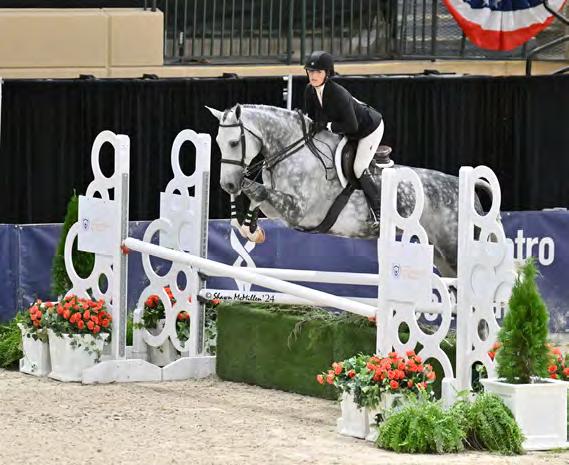


For more information on the 2025 Capital Challenge Horse Show, please visit www.CapitalChallenge.org. Additional information, photos, and coverage can be found on Facebook or Instagram. For winning rounds and rider interviews, check out the Capital Challenge Horse Show YouTube channel.

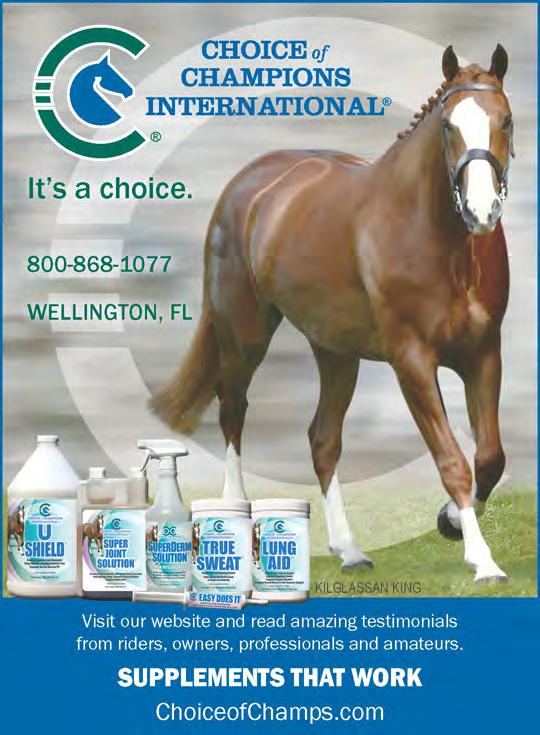
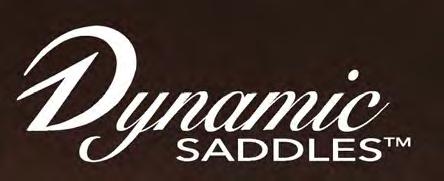
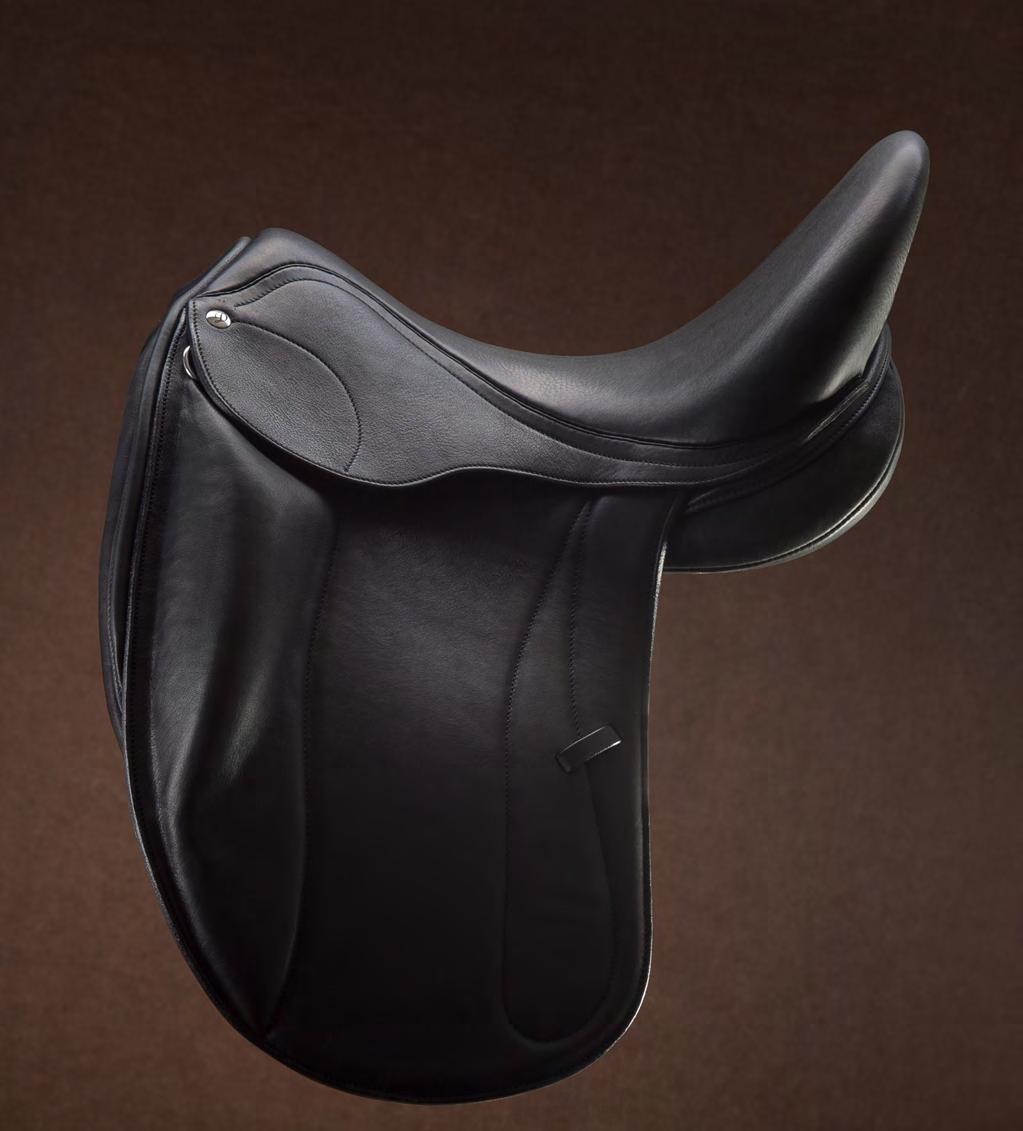

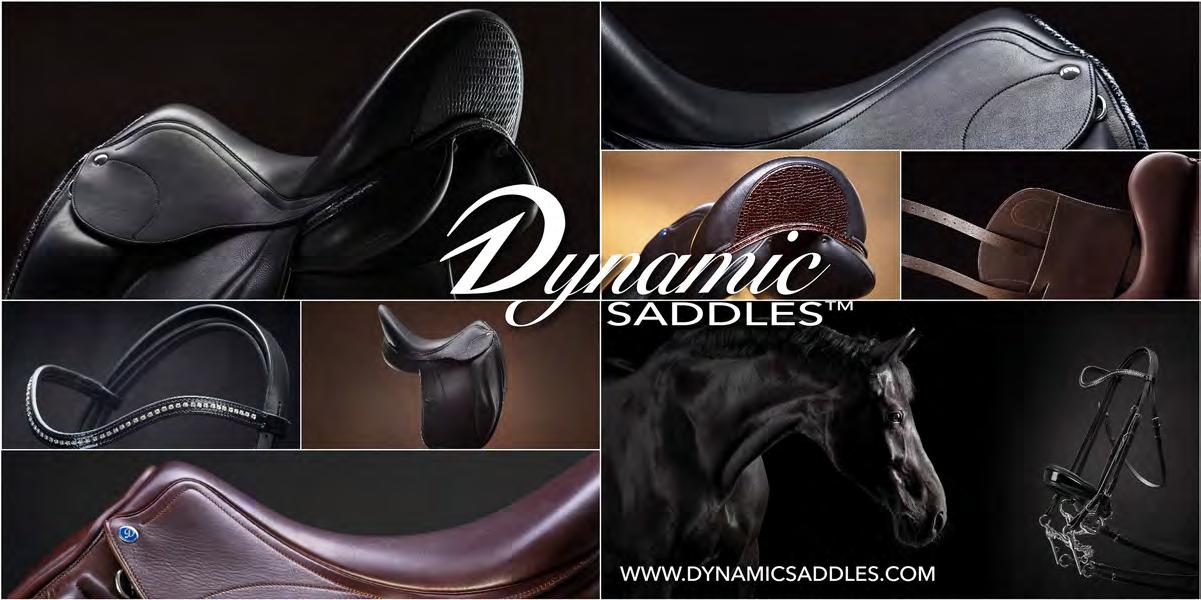
The Dynamic Saddle is engineered to fit in mo�on, and it does not have any seat pressure points and does not fla�en/collapse while under the rider’s weight. In fact, the weight of the rider along with special billet system is what loads and adjusts the saddle to the horse’s anatomy. This simplifies the saddle-fi�ng adventure! There’s no need for narrow or wide trees for most horses, and these saddles do not need to be reflocked. Correct fit is achieved on majority of horses right out of the box!
Dynamic Saddles feature close contact panels, bringing you closer to the horse to improve communica�on and add subtlety to your weight aids. We are free to avoid the bulky panels of other manufacturers because there are no pressure points from the tree that must be heavily padded. This allows our saddles to be ultra light, only 12 pound to handle.
Only the best quality leathers are used in making the saddles. Our experienced team of professionals delivers the highest standard of cra�smanship. We are a bou�que saddlery, with genera�onal saddlers that produce a limited number of saddles to our exac�ng specifica�ons. Our customer service is unmatched! Special order saddles are available for truly hard to fit equines and riders.
Every detail of saddle construc�on is designed to make the ride enjoyable for both the horses and riders:
• The saddle is designed to posi�on itself further back on the horse to reach a dynamic equilibrium and give maximum freedom of movement to the shoulders.
• Dynamic Saddles™ front billet system is designed to allow the front panels to move away from pressure of working muscles, allowing the shoulders to swing freely.
• Dynamic Saddles™ allows the rider to loosen the pelvis which makes si�ng on the horse much easier and helps the rider feel more connected to the horse.
• The flaps and thigh rolls are angled to accommodate the anatomical structures of the human body.
• The s�rrup bars are posi�oned to help the rider to achieve correct body alignment.
• If you ever struggled to thread a s�rrup leather through the s�rrup bar, you will appreciate that our bars are slightly angled, to allow for easy inser�on of s�rrup leathers. Small details that make a world of difference!
• The overall design provides unmatched security to ride correctly and helps secure a rider in place even when faced with a young horse’s an�cs.
Story and Photos By Alessandra Deerinck

Horses were the human way of transportation, but now that they are in the equestrian disciplines, we transport them to events. The way we do so is with trucks, trailers, trains and airplanes according to how far we need to take them for events.
In my experience I took my horses mostly to endurance rides, and had them in electrified corrals for the night, which gave them space to move and sleep instead of being tied and not being able to move. I always provided a water and a hay bucket. This gave the horse enough energy to participate to a long ride.
When we transport horses there are several things we need to consider
First, we need to make sure that the horse will be fine in entering the transport. Some people constrain horses to enter the transport, but the horse will remember the bad experience, and in the future will not want to enter. Joseph Ledoux who is a scientist wrote “The emotional brain”, which explains why we should not use force or scare other individuals.
A good way to help a horse is to show him that there is food inside the transport and so the horse will enter it. We also need to put wood shavings in the stalls, so if the horse urinates the urine will be absorbed and the hooves will not slip or get wet.
We need to know if where we transport the horse there are diseases that are not present where the horse lives and in case there are diseases, we should vaccinate the horse before we bring him to the place of the event.
Safety is another important factor, especially when the horse needs to be in an event. When we transport horses that live together, they are fine, but when horses that are not familiar with each other are close, we can have problems. They can kick or bite each other and this can cause lameness or wounds, so we should make sure that the horses can’t do those things. The safest way is to have them boxed in the stall.
When horses get to a new place, they become very attentive and if they are with a person they know
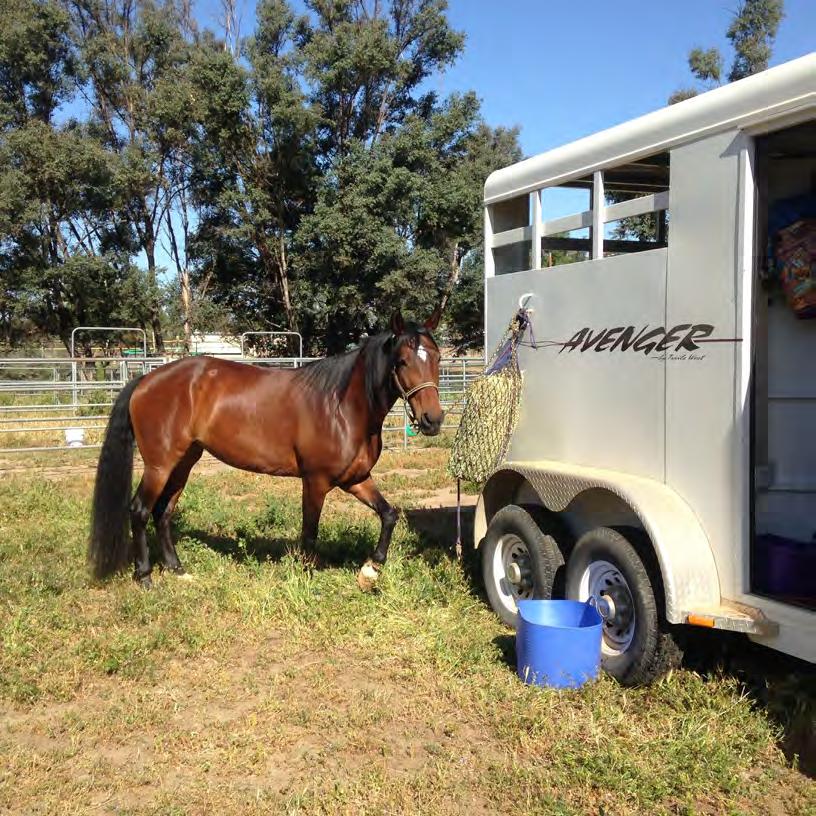



and their relationship works well, the horse will be comfortable.
Another important factor is providing horses with food in the transport and it needs to be what they are familiar with, otherwise they will not eat it. In my experience I took my horses to endurance competitions and provided them with hay nets filled with the hay that they eat daily, that allow them to eat when they need without stress.
Another important factor is to have them drink water during the trip. We can stop and give them water through the windows or take them out in a safe area and let them drink.
When we can transport horses in a good manner all goes well.

Once you have explored the gaits and definitions for Level 2, (July/August 2025 issue of Elite Equestrian, read it free at www.EliteEquestrainMagazine.com) it is time to explore the new requirements for this Level. First of the new requirements are the Collected Jog and Collected Lope as described below.
Collected Jog — The horse, remaining “on the bit”, moves forward in a two-best gait with the neck raised and arched and showing clear self-carriage. The head approaches the vertical position and a light contact is maintained with the mouth. The hocks are well-engaged and flexed and must maintain an energetic impulsion, enabling the shoulders to move more freely. Although the horse’s steps are shorter than in the other jogs, elasticity hand cadence are not lessened. The Collected jog must be ridden seated.
The collected jog is not tightening and blocking the horse to shorten his jog, it is a more energized stride that stays balanced and straight with a light contact of the reins. The horse will collect with the quality and correctness as described above.
Collected Lope — — The horse’s outline follows as in the Collected Jog. At the Collected lope the horse moves forward in a three-beat cadence demonstrating self-carriage and an uphill tendency. The horse’s strides are shorter than in other lopes, without losing elasticity and cadence.
Same as collected trot, yet more advanced to do it correctly at the lope. All the more important to ride with a deeper seat. Lightness of aids should prevail at this level.
Next in degree of difficulty for new requirements are 10 meter circles. Here we are looking for willing, smooth transitions, balance and bend in the corner and circles. This is for 10 meter circles at the collected jog and collected lope and the 10 meter half circle as well.
Shoulder-In Lateral Movement: For Shoulder In we are seeking consistent angle, correct degree of bend with balance, engagement and straightness.
During Haunches-In, balance and bend are needed on the half circle to prepare haunches in, consistent angle and engagement during the movement are necessary.
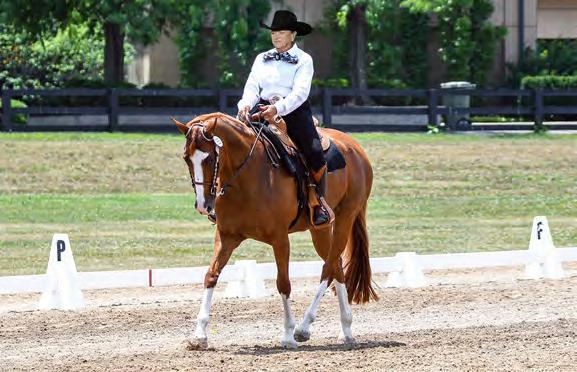
Lengthened lope on the rail must show a clear transition with moderate lengthening of stride and frame with the same tempo as collected lope.
While performing the simple change of lead, the horse and rider must follow a straight line on the diagonal, clear walk steps with balanced and smooth transitions both from and to the lope.
During a Sidepass the horse appears willing to respond to the rider’s leg aid, has slight flexion in the direction of travel, clarity and evenness of crossing front and hind legs with a walk tempo. Smooth transitions before and after sidepass are rewarded.
Counter lope loops rail to centerline display balance and bend on loop and corners with accuracy of size and direction.
The new requirements of collected gaits and advancing lateral work in Level 2 set horse and rider on the path to collection.
Next up in our series will be the gaits and definitions for Level 3.
I’m looking forward to the next several months, sharing tips and guidelines for understanding the simplicity of learning (in written format, at least) Western Dressage training from Level 1 to Level 5. Join me on the Journey!






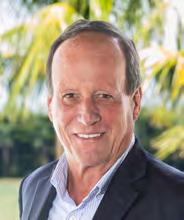

Story and Photos
By Tom Scheve
If you’re not smiling when you head out on the road with your horses, or you notice your knuckles are white from gripping the steering wheel, your fun day with your horses is already tainted. Of course, a little bit of anxiety is a good thing. You are putting your horses in a box on wheels, hooking it to your vehicle, and taking them out on the open road, and anxiety makes you pay attention. However, your apprehensions don’t have to reach a point where they ruin your day.
A good start to reducing anxiety is to identify the concerns. Ask yourself what has you worried. For instance, are you afraid of the trailer popping off the ball, a rear-end collision, loading your horses back onto your trailer once they are off, the floor giving out, having a major accident where you are incapacitated, or all of the above?
Those are some of the more common worries that customers have presented to me over the years. The good news is that each of these fears can be placated by knowing what to expect from your horses and trailer in those situations.
Failing floors are possible on older trailers, especially with aluminum floors. Aluminum corrodes if not cleaned regularly, and wood can decay. If that’s your concern, have the floors checked annually by someone familiar with repairing horse trailers. Cross members supporting wood floors should be inspected for damage and rust, as well as the boards. You can check the floorboards yourself by lifting the mats and assessing the wood. Decaying wood is soft in places, especially along the edges near the wall and in the rear. Corroded aluminum looks flaky and discolored. If the aluminum floor is covered by W.E.R.M, or a Rhino lining product, check from underneath for signs of deterioration since the floor is not visible.
If a ball is latched correctly and the ball size matches the size of the coupler, it would take a lot for it to pop off. If your trailer is a bumper pull, jack up the front of the trailer while it is hitched to your tow vehicle to test it. If it starts to lift the tow vehicle without dropping off, it will ease your mind that it’s secure. Same with a gooseneck.
Does your trailer have an additional egress, such as a side unload ramp or large doors near the head area where your horses can exit? Your comfort level will improve knowing there is an escape route for your horses in case of a rear collision.
If your horses are bad loaders, your worries will haunt you until you load them back up at the end of your outing and head back to the barn. A good trainer can help with that problem, but even good loaders will balk at loading if they see the trailer as threatening. The stall area should be light and airy and have enough room for your horses to balance

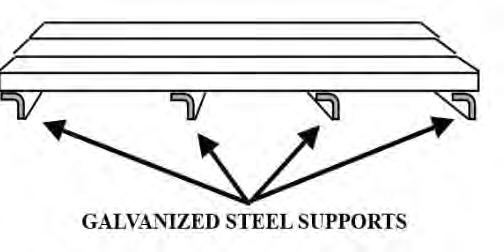
2 5/16th
2 5/16th
and stretch their necks comfortably. Horses are claustrophobic, and since their eyes don’t adjust from light to dark as quickly as ours do, they may think you are asking them to walk into a big hole.
Standard safety procedure is to maintain a list of people to call who can make decisions about your horses in the unlikely event you have an accident and are incapacitated. The list should include the names of people on your phone contact list whom first responders can call in case of an emergency. Put the initials ICE by the name (In Case of Emergency), and make sure the list is somewhere visible. Additional precautions that will chip away at your anxieties are having an emergency road kit containing flares and fluorescent triangles in your trailer, and purchasing a membership in an equine road service.
Check the spare tires on your trailer and tow vehicle to ensure they are in good condition and are fully inflated. Know the location of your spare tire and jack in your tow vehicle, and carry enough water, clean rags, and a first aid kit to handle lacerations.
You may have fears other than those we’ve mentioned here. If so, identify them, then prepare for what could happen, and you just might find yourself smiling as you head to enjoy a day with your horses.




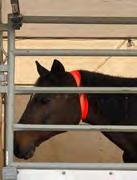




The World Organization of Equestrian Tourism (OMTE) has announced the appointment of journalist and communicator Marta González as its new Director of Communication and Promotion. This strategic decision strengthens OMTE’s commitment to a solid, modern international projection aligned with the core values of equestrian tourism: sustainability, animal welfare, and responsible rural development.
With over 15 years of experience in media, project management, ins�tu�onal communica�on, and tourism promo�on, Marta González takes on this new responsibility with the aim of expanding the global visibility of the organiza�on’s ini�a�ves and posi�oning equestrian tourism as a cultural, respectful, and transforma�ve travel alterna�ve within the broader tourism sector.
“It’s a great honor to join an interna�onal organiza�on that promotes high-quality equestrian tourism and supports sustainable travel that contributes to local development without compromising the natural environment. Most importantly, for me, it’s about joining a team that priori�zes the care and welfare of horses,” said González following her appointment.



A journalism graduate from the Complutense University of Madrid and currently pursuing a PhD in Poli�cal Science, Marta González has skillfully combined her academic training with a deep personal calling: communica�ng with authen�city and crea�ng posi�ve impact through stories from the equestrian world.

She has worked with specialized publica�ons like GALOPE magazine, publishing interviews and features that gave visibility to key figures in the sector. She has also collaborated with Condé Nast Traveler, wri�ng about unique equestrian experiences and interna�onal riding routes that blend nature, sustainable luxury, and cultural immersion.
In the ins�tu�onal sphere, she worked as Project Manager at Hipódromo de la Zarzuela in Madrid, where she led communica�on campaigns and strategic ac�ons linked to rebranding and revitalizing the venue and its events. Her innova�ve approach and global vision opened new avenues for collabora�on between brands, tourism, and equestrian culture.
In recogni�on of her work, Marta has received the SICAB Award from ANCCE (Na�onal Associa�on of Purebred Spanish Horse Breeders) twice — in 2020 and again in 2023 — one of the top accolades in the Spanish equestrian sector.
Beyond her media work, Marta has built a dis�nguished career as a global ambassador for pres�gious equestrian brands. She has collaborated with LONGINES, the Swiss watch brand associated with the equestrian world, serving as a guest journalist and brand ambassador at elite events such as Madrid Horse Week, Paris Global Champions Tour, Dubai World Cup, and the Longines Masters in New York.
She was also invited as an ambassador by Masera� to a�end the Snow Polo World Cup in St. Moritz, Switzerland — one of the world’s most elegant polo events. For three consecu�ve years, she represented the Na�onal Polo Tournament of Madrid, helping to elevate its image through strategic communica�on rooted in storytelling, global visibility, and cultural resonance.
Her travels have taken her across five con�nents, collabora�ng with elite equestrian resorts such as NIHI Sumba in Indonesia, widely recognized as one of the world’s top luxury resorts. There, she blended adventure tourism, horse welfare, and cultural storytelling.
Leading Two Strategic Pla�orms:
Equus Comunicación and Mundo a Caballo TV
Marta is not only a voice and face of interna�onal equestrian tourism — she is also the founder and leader of two major ini�a�ves:
• Equus Comunicación, a crea�ve agency specializing in audiovisual content for the promo�on of equestrian tourism, with a strong focus on visual storytelling, emo�onal impact, and alignment with sector values.
• Mundo a Caballo TV, a television program airing since 2020 on Televisa and Sky México, as well as on YouTube. The program features horseback riding routes, interviews with industry leaders, and authen�c equestrian travel experiences around the globe. It has become a reference for those seeking a more connected and meaningful way of traveling through nature and culture.
Both ini�a�ves complement her personal brand on social media, @martagonzalez_, where she shares travel stories, interviews, events, and curated content that promote equestrian des�na�ons, rural tourism, and ethical prac�ces — engaging thousands of followers worldwide.
“A horse is not a vehicle; it’s a partner, an emotional mirror.

Purposeful Communica�on: Ethics, Sustainability, and Horse Welfare
In her new role at OMTE, Marta will design and implement a comprehensive communica�on strategy that integrates ins�tu�onal branding, interna�onal campaigns, digital content, and partnerships with tourism agencies, NGOs, and private sector actors. One of the central pillars of her approach is animal welfare, which she considers non-nego�able in equestrian tourism. As she explains:“ A horse is not a vehicle; it’s a partner, an emo�onal mirror. How we treat them speaks volumes about who we are as a society. At OMTE, we want to foster a form of tourism that respects, understands, and truly cares for horses.”
In 2020, Marta le� her life in Madrid to move to the countryside, embracing a slower-paced lifestyle more a�uned to nature, animals, and rural communi�es. Since then, she has become a prominent voice in the slow life and voluntary simplicity movements, advoca�ng for a lifestyle that is more essen�al, less consumer-driven, and more connected to the rhythms of nature. Her online content reflects this personal transforma�on, inspiring many to consider a more balanced way of living. She has become not just a professional reference, but also a role model for those seeking purpose, alignment, and authen�city
Marta González represents a new genera�on of leaders who bring together experience vision, and strong values. Her appointment to OMTE is not only a recogni�on of her outstanding career but also a strategic move toward a more human, ethical, and transforma�ve communica�on approach. At a �me when the tourism industry is searching for reinven�on and authen�city, Marta arrives to give voice to the horse, to the countryside, and to a way of traveling that respects both people and the planet.
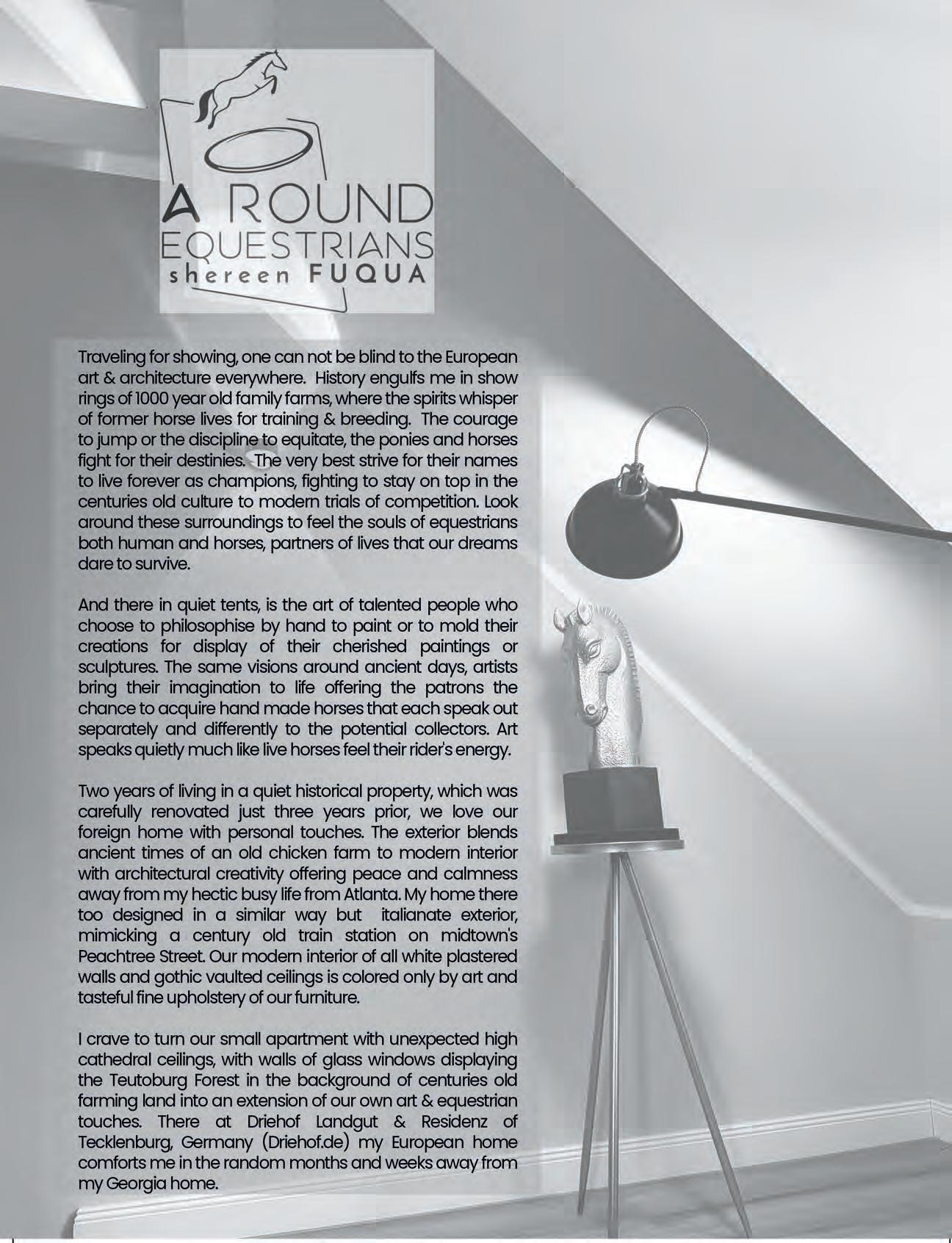
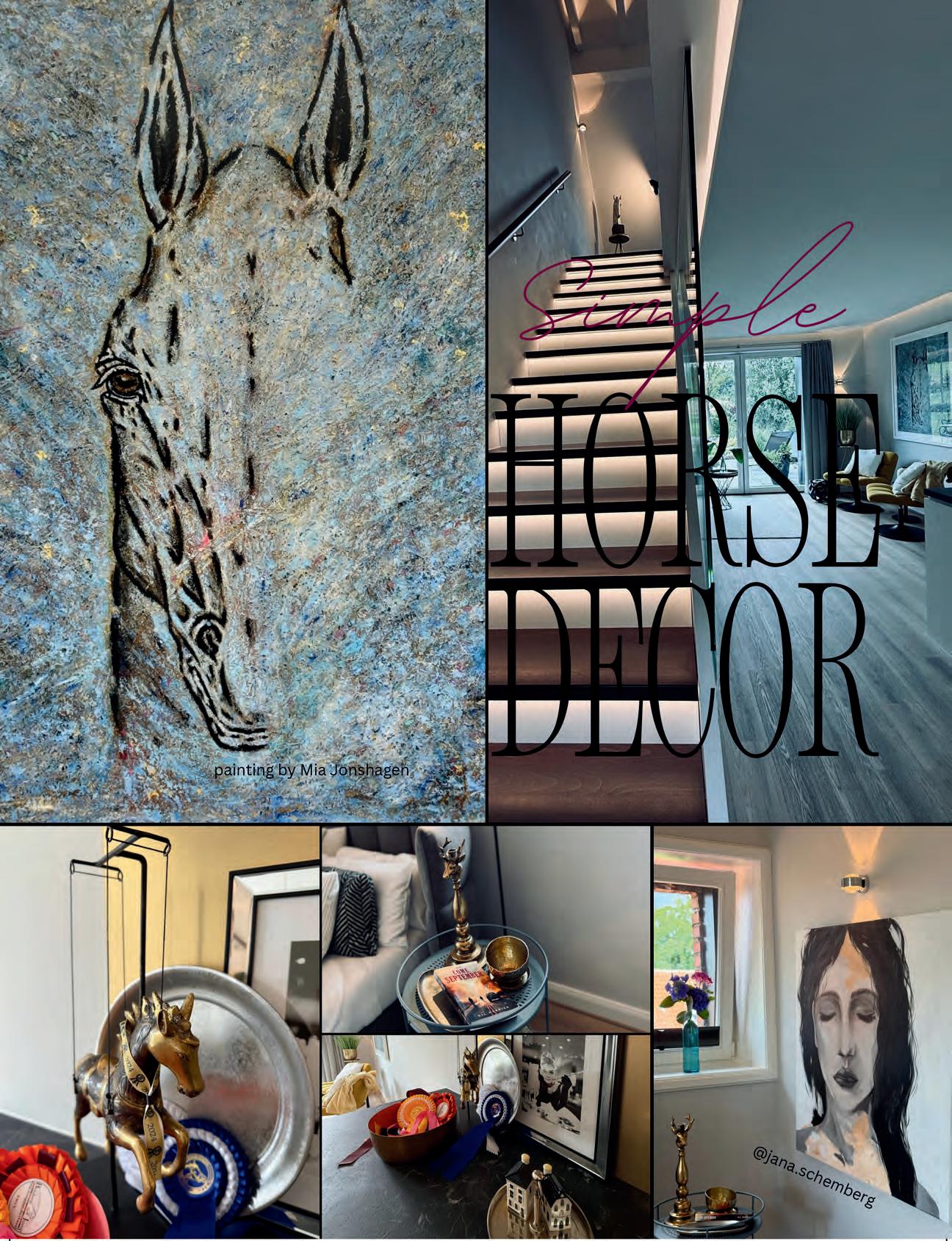



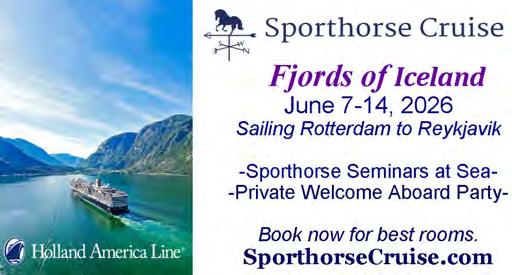
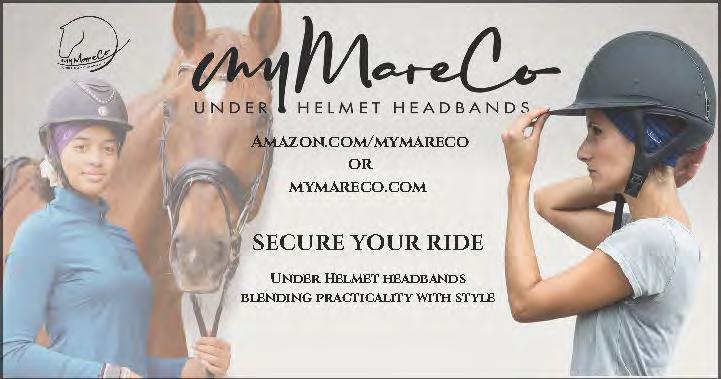

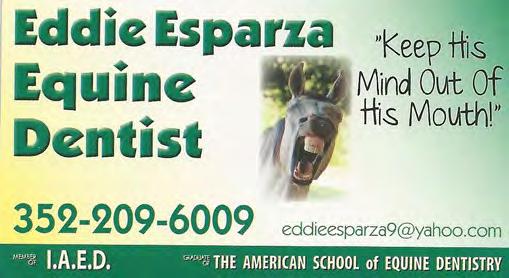




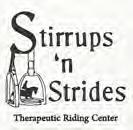
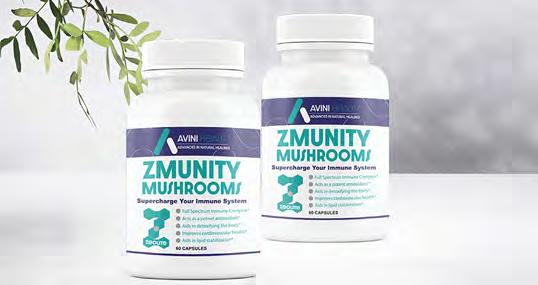


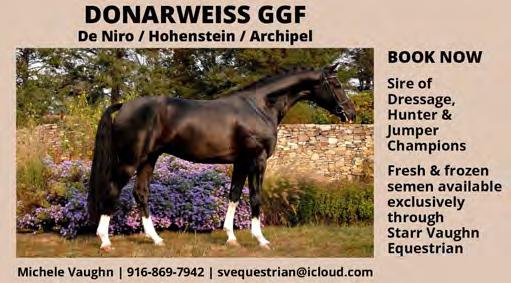


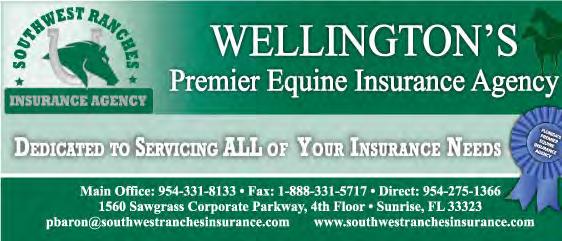






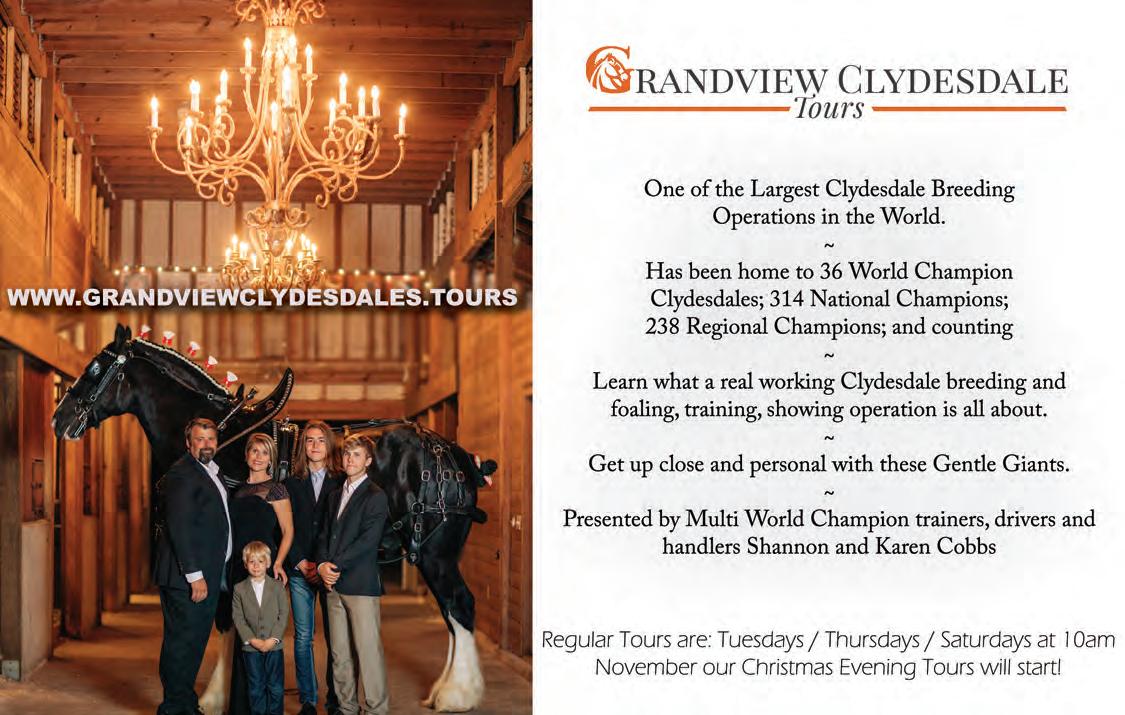
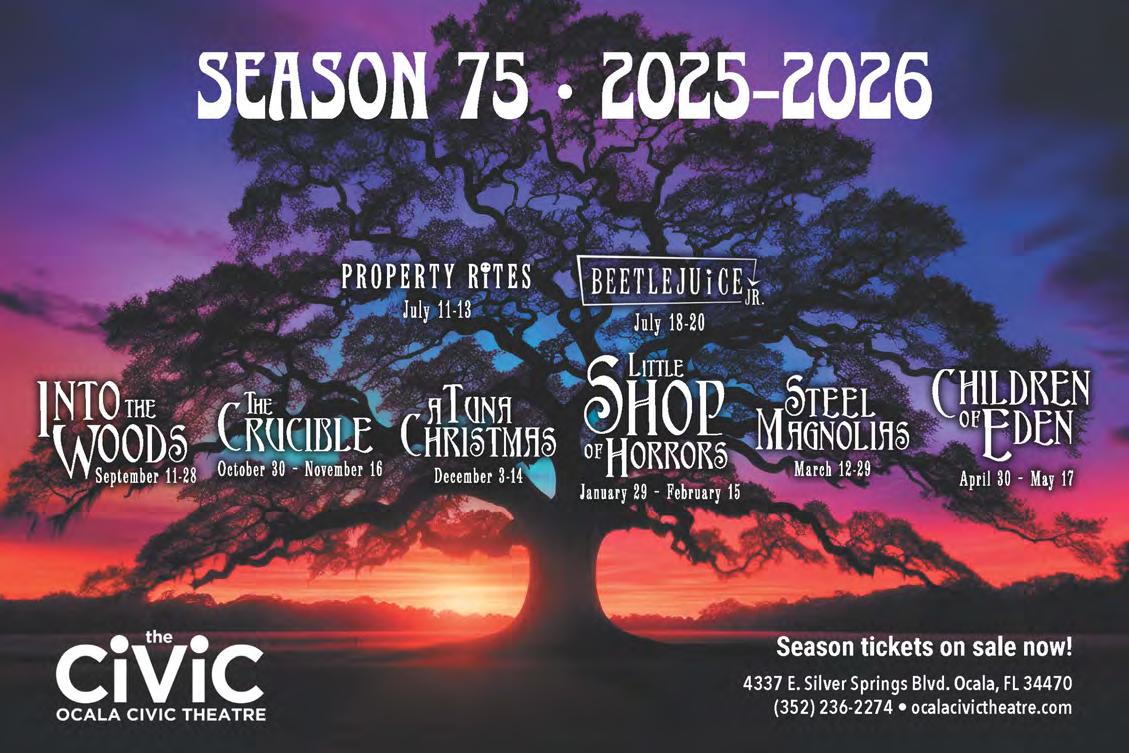
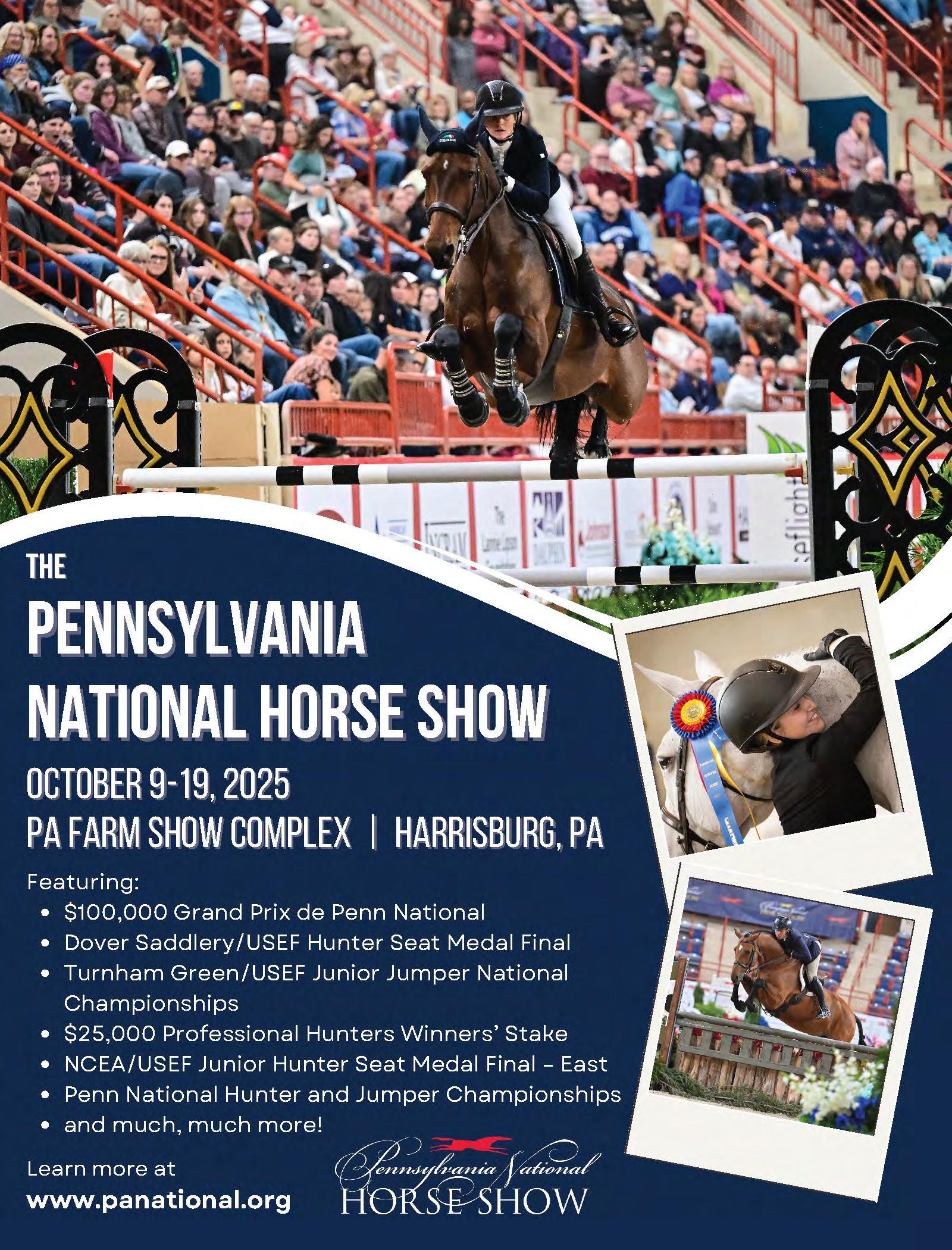

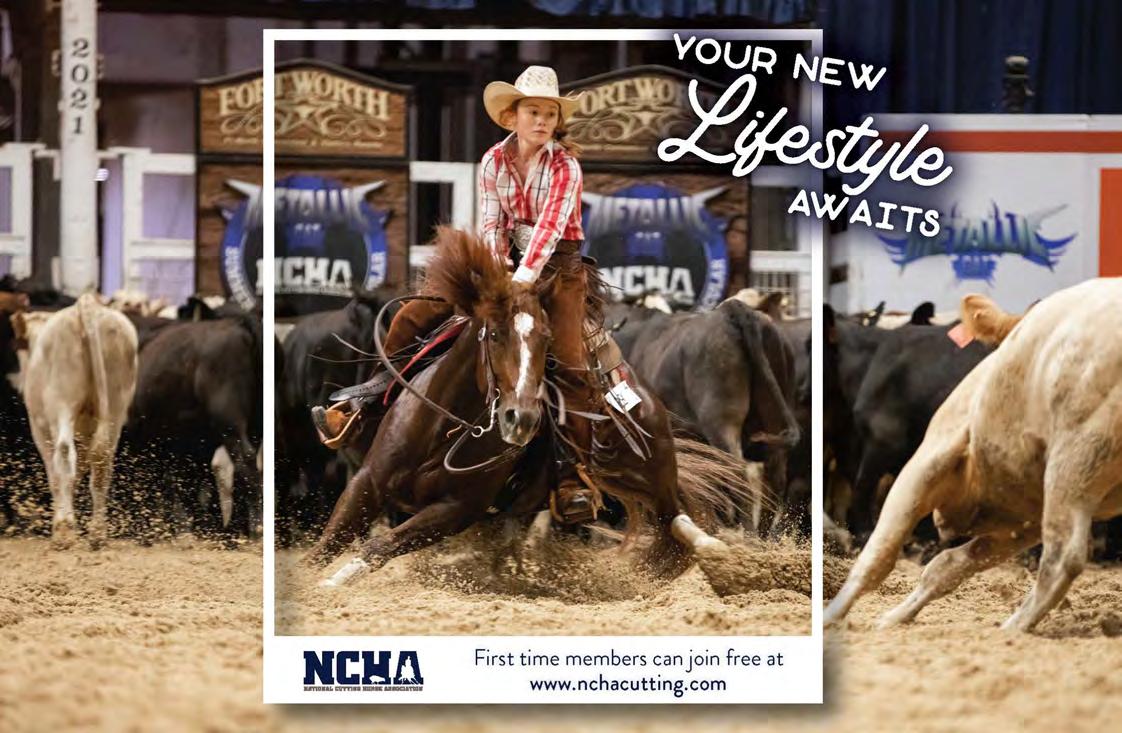




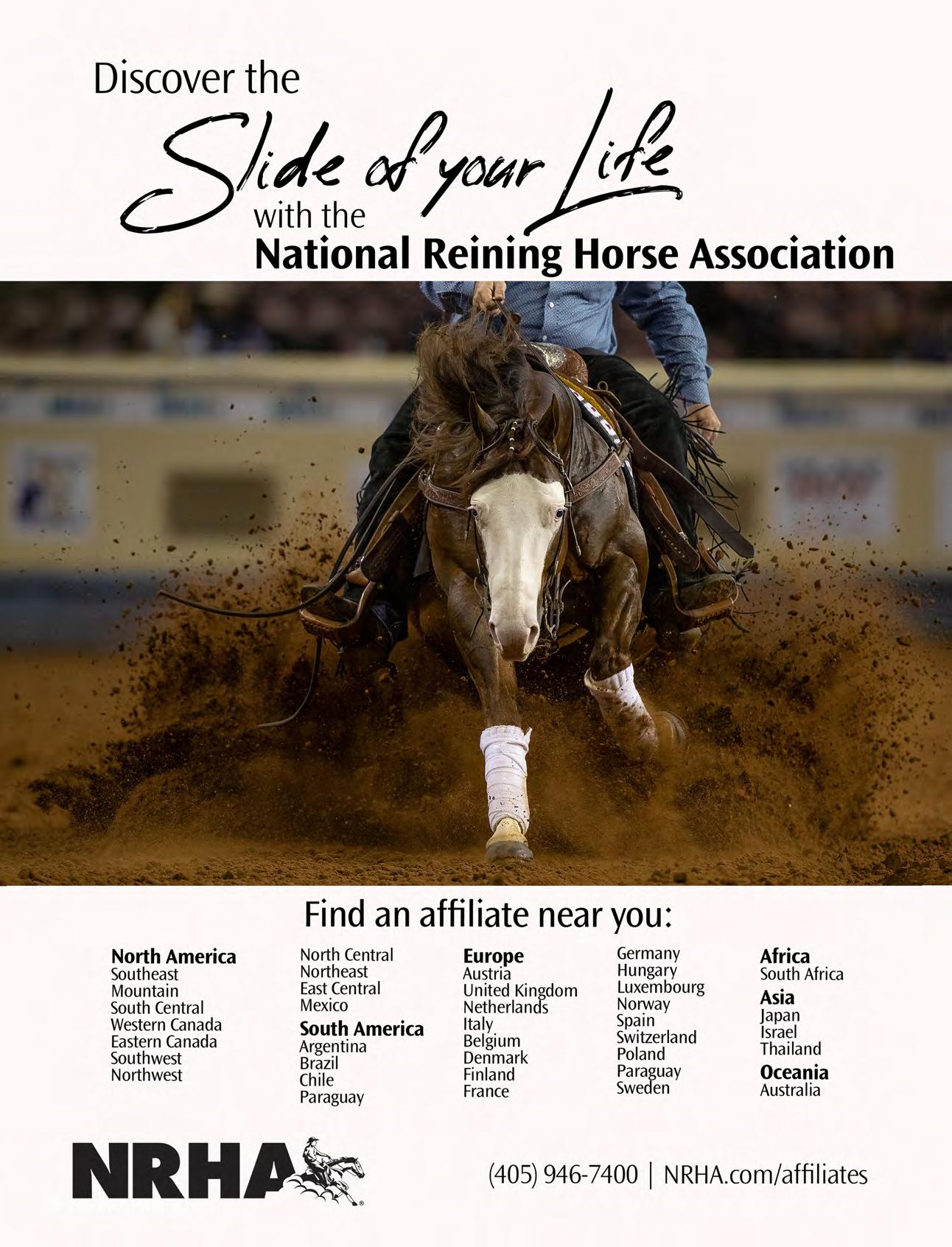

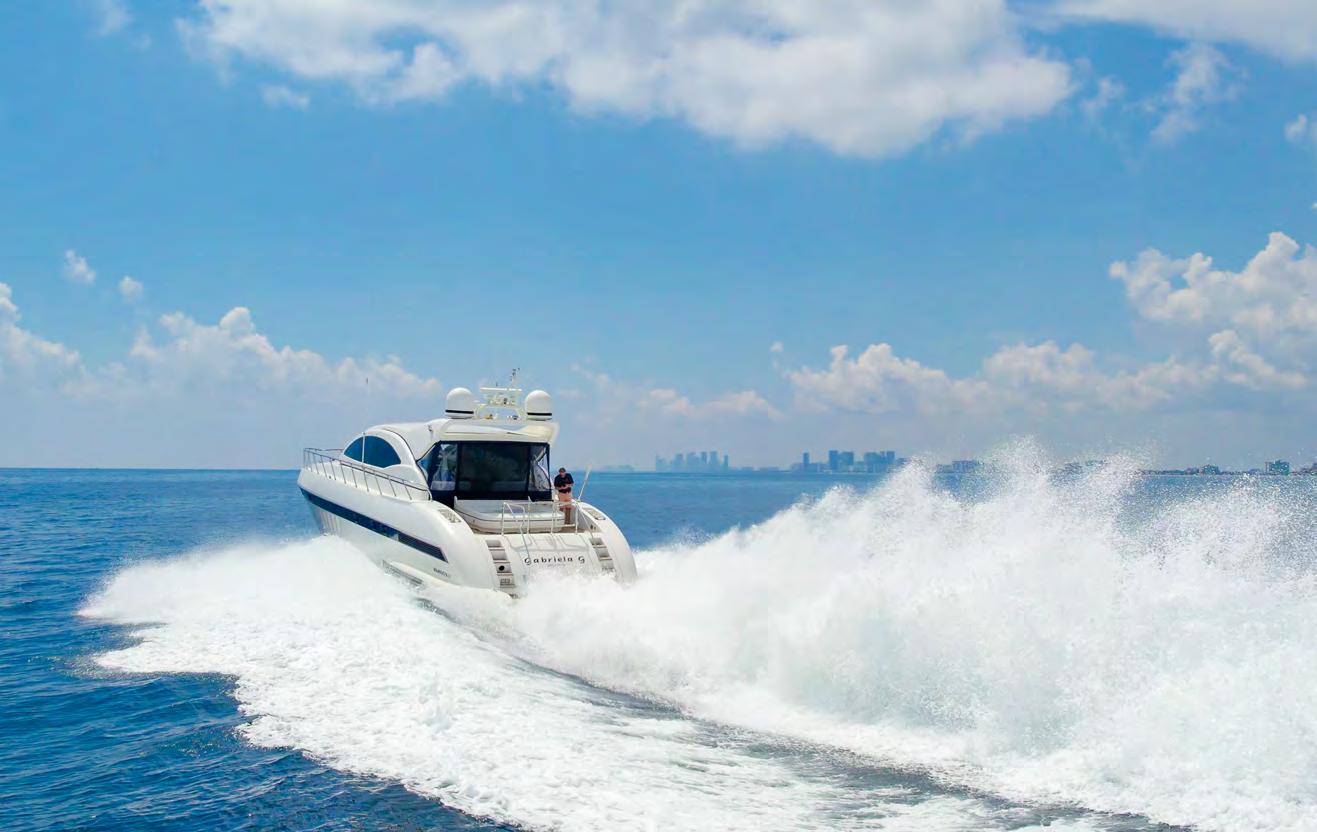
This magnificent “Italian Stallion” MANGUSTA 72’ Express Fast Motor Yacht, has just some 60 running hours since her extensive refit in 2023, is in grandiose condition.
